Feed aggregator
A Sword & Sorcery Series I Really Love: Flashing Swords!, edited by Lin Carter
Flashing Swords! #2, 4, & 5 (Science Fiction Book Club, September 1973, May 1977,
and December 1981). Covers by Frank Frazetta, Gary Viskupic, and Ron Miller
It’s time to take a look at another Sword & Sorcery anthology series I really love: Flashing Swords, edited by Lin Carter. It is second in my affections only to the Swords Against Darkness 5-book series edited by Andy Offutt that I wrote about here last year.
Flashing Swords! came out of the group known as SAGA, which stood for the Swordsmen and Sorcerers Guild of America, a group in the 1970s and 80s that included almost all the elite S&S writers of the age.
They were an informal group but Lin Carter was the closest thing they had to a leader. Under his editorship, five outstanding anthologies of works from their members appeared, all new stories, not reprints. As shown in the pictures below, I have the volumes from Dell paperbacks, as they were originally released, and three from Nelson Doubleday in hardback (above), as they were offered by the Science Fiction Book Club.
[Click the images for flash versions.]
Flashing Swords #1 (Dell, July 1973). Cover by Frank Frazetta
Flashing Swords #1 (1973) has 4 longish stories by Leiber, Vance, Anderson and Carter. All were strong and this is probably the strongest of all the volumes. Anderson’s story, “The Merman’s Children,” is the best, and Carter’s story, “The Higher Heresies of Oolimar,” is one of his strongest ever.
The cover was an awesome Frazetta, one of my favorites of his paintings behind his Kane and Death Dealer art. The volume was dedicated appropriately to Robert E. Howard.
Flashing Swords! #2 (Dell, April 1974). Cover by Frank Frazetta
Flashing Swords #2 (1973) is dedicated to Henry Kuttner. It had four more long stories, by L. Sprague de Camp (with whom Carter had a long history), Michael Moorcock, Andre Norton, and John Jakes.
Moorcock’s story, “The Jade Man’s Eyes,” was of Elric, and Jakes’ story, “Ghouls Garden,” was about his character Brak. I’ll talk more about both authors eventually here but both these tales were very good and I particularly loved the Brak story, which made me seek out more of the tales.
Flashing Swords #1 & 2, UK editions (Mayflower, 1974 and February 1975). Covers by Bruce Pennington
The hardback has a great Frazetta cover, but have a look, too, at the paperback cover from Mayflower books (above), which I found online. I like that one even better than the Frazetta I think, although that sounds almost blasphemous.
Bruce Pennington did it and I wish I had that edition.
Flashing Swords! #3: Wizards and Warriors (Dell, August 1976). Cover by Don Maitz
Flashing Swords #3 (1976) bore a subtitle, Warriors and Wizards. It was dedicated to Clifford Ball. This was the weakest of the five volumes, although still good. It had stories by de Camp, Fritz Leiber, Andre Norton, Carter, and Avram Davidson.
The Leiber story, “The Frost Montreme” — Fafhrd and the Gray Mouser — was the strongest. Don Maitz is the cover artist. It’s good, but a bit less barbaric than I like. Very Renaissance looking.
Flashing Swords! #4: Barbarians and Black Magicians (Dell, November 1977). Cover by Don Maitz
Flashing Swords #4 (1977) is subtitled Barbarians and Black Magicians. This one is dedicated to Norvell Page, who I’ll be covering here. Stories by Vance, Anderson, Jakes (Brak; Storm in a Bottle), Katherine Kurtz, and Moorcock (Elric; “the Lands Beyond the World”).
This one is as strong as the original volume, and I like the hardback cover by Gary Viskupik. It also has some cool interior illos by Rick Bryant. The paperback cover, which I found online, is by Don Maitz again and looks like an Elric representation.
Flashing Swords! #5: Demons and Daggers (Dell, December 1981). Cover by Rich Corben
Flashing Swords #5 (1981) is subtitled Demons and Daggers. No dedication. It has a cool wraparound cover by Ron Miller, although it’s my least favorite of the series. The Dell paperback has a cover by Richard Corben.
Includes stories by Roger Zelazny (a Dilvish tale), C. J. Cherryh, Diane Duane, Tanith Lee, and the first humorous story in the series by Craig Shaw Gardner. I didn’t think it was as strong as #1, #2, or #4, but somewhat better than #3.
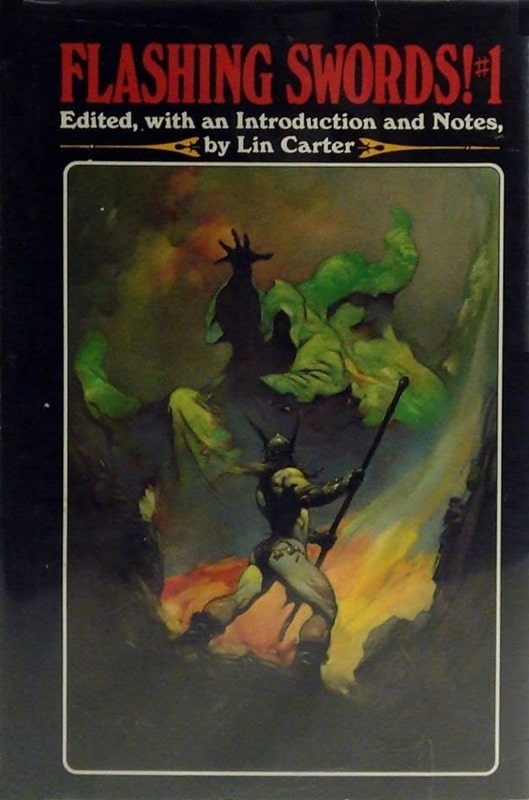
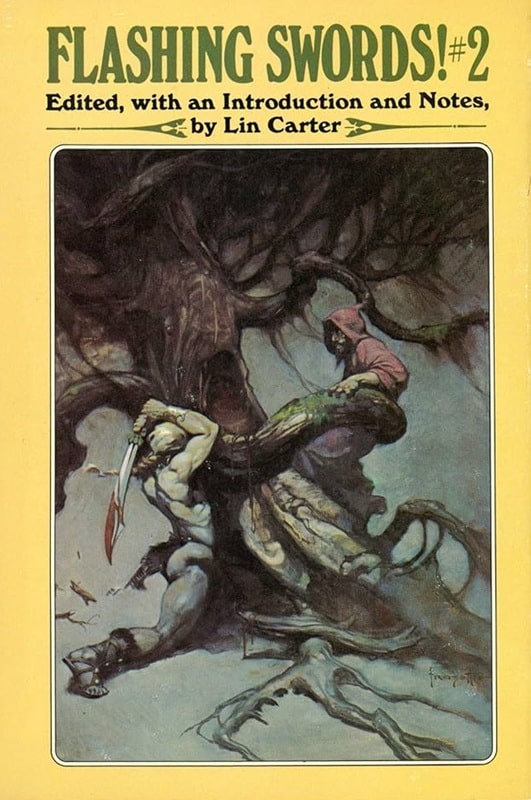
Flashing Swords! #1 & 2 (Science Fiction Book Club, April and September 1973). Covers by Frank Frazetta
In 2020, Robert Price, Lin Carter’s literary executor, revived the series as Lin Carter’s Flashing Swords. There have been two volumes published, although the first one created a minor storm of controversy over the introduction by Price. I have not yet bought or read these two volumes.
I’ve also included above the hardcover covers for volumes 1 and 2 (above), both by Frazetta.
Charles Gramlich administers The Swords & Planet League group on Facebook, where this post first appeared. His last article for Black Gate was Sword & Sorcery on a Post-Apocalyptic Earth: Blackmark by Gil Kane.
Women in SF&F Month: J. D. Evans
Today’s Women in SF&F Month guest is J. D. Evans! She is the author of the epic fantasy romance series Mages of the Wheel, which currently contains five novels. Reign & Ruin, her debut novel and the Self-Published Fantasy Blog-Off Award–winning first book in her series, features a Sultana and prince who “must find a way to save their people from annihilation and balance the sacred Wheel.” I’m thrilled she’s here today with her essay “In Defense of the Kind […]
The post Women in SF&F Month: J. D. Evans first appeared on Fantasy Cafe.Teaser Tuesdays - Under the Surface

Selena peers into the hole, then jerks back. "Whoa, that goes really far down."
Julien waves us closer. "We must hurry, yes?"
(page 33, Under the Surface by Diana Urban)
---------
Teaser Tuesdays is a weekly bookish meme, previously hosted by MizB of Should Be Reading. Anyone can play along! Just do the following: - Grab your current read - Open to a random page - Share two (2) “teaser” sentences from somewhere on that page BE CAREFUL NOT TO INCLUDE SPOILERS! (make sure that what you share doesn’t give too much away! You don’t want to ruin the book for others!) - Share the title & author, too, so that other TT participants can add the book to their TBR Lists if they like your teasers!
Book review: Where The Axe is Buried by Ray Nayler

Book links: Amazon, Goodreads
ABOUT THE AUTHOR: Ray Nayler is the author of the Locus Award winning novel The Mountain in the Sea. For nearly half his life, Ray has lived and worked outside the United States in the Foreign Service, the Peace Corps, and in international development. He was Environment, Science, Technology, and Health Officer at the U.S. consulate in Ho Chi Minh City. He most recently served as international advisor to the Office of National Marine Sanctuaries at the National Oceanic and Atmospheric Administration, and as a diplomatic fellow and visiting scholar at the George Washington University's Institute for International Science and Technology Policy. He lives in Washington, DC.
Publisher: MCD (April 1, 2025) Length: 336 pages Formats: audiobook, ebook, paperback
Nayler’s previous works impressed me. They are quieter, more cerebral, and heavier than most sci-fi I see nowadays. Where the Axe is Buried is no exception - it’s ambitious, sometimes dense, often cerebral, and very much not here to hold your hand.
Zoya, a revolutionary leader, is living on borrowed time. Lilia, a scientist, is quietly lighting a match under a corrupt regime. Both feel their world is falling apart in slow motion. Resistance movements aged into institutions, rebellion calcified into bureaucracy, and some people became symbols at the expense of their humanity. Surveillance became part of daily life, social credit systems force social obedience. Huh. Actually, it doesn’t feel like a far-off dystopia.
The story here is complex and drops readers into a tangled web of politics, ideologies, and slippery truths. There were definitely moments where I had to pause, re-read, or just pause. It’s dense, and not every reader is going to vibe with that. Especially if you come to sci-fi for character-driven stories -because while the characters here are interesting, they’re not always warm or even likable.
There’s a lot of high-concept tech in here (consciousness transfer, AI-run governments, memory networks), which is cool and disturbing. What happens when history is controlled by algorithms? Who decides what the future looks like? Can power ever truly be neutral? And so on, and so on, with no simple answers.
Overall, I felt Where The Axe is Buried is more interested in systems than individuals, in ideology over intimacy. It’s intellectually rich, occasionally chilly, but worth the effort.
Book Review: Another Fine Mess by Lindy Ryan
I received a review copy from the publisher. This does not affect the contents of my review and all opinions are my own.
 Another Fine Mess by Lindy Ryan
Another Fine Mess by Lindy Ryan
Mogsy’s Rating: 4 of 5 stars
Genre: Horror
Series: Book 2 of Bless Your Heart
Publisher: Minotaur Books (April 15, 2025)
Length: 368 pages
Author Information: Website | Twitter
I think once you get a feel for what the Bless Your Heart series is all about, it’s easy to fall in love with it. From the cover and synopsis vibes, you’d be right to guess this isn’t the kind of horror that keeps you up at night, but neither is it your typical fluffy, quirky cozy mystery. In fact, it hits that sweet spot somewhere in between—a little bit dark, a little bit weird, with just enough humor to keep things fun and the unsettling moments from taking over. Another Fine Mess is the second book in the series, and it continues to build on this balance.
Picking up not long after the events of Bless Your Heart, this sequel drops us back into the small southeastern Texas town where the women of the Evans family have spent generations keeping the peace in a very unexpected way. For you see, the dead have a way of not staying dead here, but running the local funeral home means the Evanses are the first line of defense whenever the deceased gets restless. Following the devastating losses from the end of the first book though, only Lenore Evans and her teenage granddaughter Luna are left to hold down the fort. Now they are desperate for some answers, and the new sheriff in town is way out of his depth and not much help. Only family secrets, half-forgotten lore, and the remnants of old legends can help them figure out what’s happening to their town.
Lately, there’s been a string of unexplained occurrences—locals vanishing without a trace, mysterious deaths, and an uptick in missing pets. While most folks in town are quick to blame it on a rabid animal on the loose, Lenore knows better. She recognizes the signs of a strigoi attack all too well. These are troubled spirits fueled with relentless rage, and they won’t stop until they’re put down for good. In the meantime though, the Evans women must keep the townsfolk calm, hiring some extra help at the funeral home to disguise the gory nature of the deaths. However, authorities have also hired a wolf expert from the university to investigate, and she’s skeptical that the killings have anything to do with an animal. As the body count rises, causing the media to descend upon the town, Lenore and Luna must race against time to find a solution before whatever is out there comes for them next.
In this worthy follow-up, the author keeps the plot brisk and engaging, layering scenes of bloody horror with easy humor and endearing character relationships. It’d definitely be helpful if you’ve read the first book, as many of these dynamics have been carried forward from Bless Your Heart. The story unfolds through multiple points of view, mostly from key players like Lenore and Luna, but there are some supporting POVs thrown in throughout for extra flavor. In addition, there is even a major character whose presence in this sequel surprised me, but it was also very welcome.
Of course, what I enjoyed most about this book was the way it embraced both the horror ingredients as well as the light-hearted elements found in any story about complex family ties. Underneath all the blood splatter of disembowelments and dismembered limbs is a solid core based around a family’s shared grief, resilience, and love. Not even death can break the bonds between the Evans women, and the relationships between them show that what they mean to each other transcends generations and even traditional mortal boundaries. In the horror department, what we get here leans more towards gore and the macabre, but a lot of it is done in such an over-the-top way that it doesn’t end up all that scary. In fact, the campiness was actually kind of refreshing, and Ryan’s version of the vampire and werewolf mythos feels both familiar and inventive when combined with the charming properties of Southern Gothic tropes.
Overall, Another Fine Mess is a fast and witty sequel, and together with its predecessor makes for an entertaining and unique entry in the urban fantasy horror genre. With the second book, considered me sold on the quirky family drama and gallows humor of this series. I would love to see the Evans women return for more stories in this darkly charming Southern setting, and if that happens, I’ll definitely be back.
![]()
![]()
Comment on A Beginner’s Guide to Drucraft #34: Measurements of Strength by Kevin
In reply to Benedict.
Ah that makes sense. Obvious we haven’t seen the Ashfords aside from Calhoun use sigls due to lack of screen time but from what little we have seen, it doesn’t seem like they are that skilled with Drucraft. If they married into House Meusel and only one of them is a prodigy that would indicate they are better at selling sigls than using them.
Magnus seems to be a Drucraft cripple which he passed on to Tobias and Isadora, and Lucella isn’t even a shaper which I think would mean she is only a tyro. That leaves Helen who I believe leans more on the Drucraft business side of things than actually ability and Stephen got his skills for his Father.
So would Stephen in pure Drucraft be behind Calhoun in for lack of a better term rankings for the Ashfords? Or would Charles and his mother have an edge or be equal to him?
Free Fiction Monday: Death And Taxes
People often misquote Benjamin Franklin on the only certainties in life—death and taxes. But Patrick wonders about the truth in that.
Once, young and foundering, he embarked on a quest to challenge life’s inevitabilities.
Now, older and jaded, he comes face to face with his past, forcing him to question everything he believes.
“Death And Taxes“ is available for one week on this site. The ebook is also available on all retail stores, as well as here.
Death And Taxes By Kristine Kathryn Rusch
Sixteen years and a half continent away from the great American Midwest, Patrick saw Keri. She was running out of the market across the street from his favorite coastal café, a bottle of wine in her hand.
At first he thought it couldn’t be her. Her long brown hair caught the sun, reflecting it in golden highlights. She was slender, and the blue sundress she wore hung off her as if she hadn’t grown into it yet.
Perpetually twenty. That was what he thought as he sipped his mocha and returned to the Wall Street Journal. Keri would always be twenty and coltish, not quite grown into her body.
He smiled at himself, at his romantic nature. Proof, perhaps, that he had loved her because he saw her in every gangly twenty-year-old with the promise of great beauty.
Then a car horn made him look up. The woman was standing in the middle of the street, staring at him, cars stopped all around her. The bottle of wine had shattered at her feet.
His gaze met hers.
She hadn’t changed.
And there was a look of abject horror on her face.
***
Sixteen years and half a continent away, he’d been twenty-five, callous and certain of his own future. The son of a prominent lawyer, he’d become a lawyer too—not with the thought of practicing law, but with the thought of creating it. He studied politics like it was a religion, and decided that he had to be in the seat of government. So, with his newly minted certificate from the bar, he headed downstate thinking the capitol would welcome him.
Instead, he learned that any state capitol had its share of locally grown lawyers. With his pedigree, the partners at the large local firms said, he could get a job anywhere. The following question—why here?—had an underlying meaning: what’s wrong with you? How come you haven’t gone to your father’s firm?
He couldn’t very well say he had come because he thought getting into politics would be easier here. It wasn’t. He didn’t know anyone, and the art of politics was the managing of connections.
Eventually, he got a job as a junior staff lawyer at the Fair Housing Coalition, a job he saw as beneath him both financially and politically. Yes, yes, he believed everyone should have a home and everyone should be treated fairly, but most of the people he saw were too dumb to realize that a lease agreement was a legal document and that their behavior had put them in trouble with their landlord and the local laws.
He could have, he later supposed, joined the interoffice coalition that was working to change some of the more egregious landlord-tenant laws, but his heart wasn’t in it. Instead, he gravitated to the local university, spending his time in the student union, drinking with people who reminded him of his friends back home, talking philosophy and planning to change the world, one little decision at a time.
That was how he learned about the Professors Simmons and their interdisciplinary study—financed by any number of government agencies and private corporations—and extended, theoretically, over decades.
The study only made it through the first five months of its existence.
It caused two deaths, and derailed any hopes he had of politics—at least out front. Only fast-talking and the excellent attorneys of his father’s firm had saved Patrick from being disbarred.
By then, he didn’t care. He’d already met and lost Keri.
And had his belief in everything shattered.
***
He grabbed his mocha as he headed out of the café. Interesting, he would later think, that he’d left his PDA and his newspaper, but took his beverage.
It was a clear sign that he wasn’t thinking, just reacting, running through the closely set tables to the double-doors, pushing them open and hurrying into the street.
A VW Bug swerved past him, and the driver shouted an obscenity. A sedan, following, leaned on its horn.
But he didn’t move. He stared at the broken bottle, the red wine running like blood down the empty sidewalk.
Keri was gone—as if she had never been.
***
The Professors Simmons were not related. There were four of them, all in different disciplines. They met at a large university faculty gathering where everyone had been asked to clump alphabetically. Their common last names, their common ages, and their uncommon interests held them together a lot longer than the meeting had.
Professor Abigail Simmons taught philosophy. She had two seminars in which she tortured undergraduates, forcing them to challenge the realities in the world around them. She also taught three graduate seminars to the same twenty grad students, the courageous few who thought majoring in philosophy was a good idea, no matter how badly it ruined them for the job market. She had grown frightened for her own job, discovering that publishing occasional articles in philosophical and religious journals wasn’t enough to impress her dean. Apparently, she had to do some sort of breakthrough research to justify her salary. But, she would argue, breakthrough research and philosophy were by definition incompatible, something her dean believed she—of all people—could overcome.
Professor Roderick Simmons taught political science. He was the rightwing guru of the poli-sci department, the man that local media always called to give a reliable—and seemingly balanced—view of local elections. Roderick Simmons specialized in political systems and, in addition to his well-received books, he spent a lot of time away from campus, consulting with various groups, many of them tied to the Republican Party. He was tenured and secure, which made him perfect for this joint project.
Professor Marilyn Simmons was a biologist. Her teaching work involved occasional lectures to overcrowded 101 classes (with the day-to-day work done by teaching assistants) and supervising the research of sleep-deprived graduate students. Her seat at the university had funding from outside grants; she was a star professor who felt her own area of expertise had grown a bit stale. She was looking for a new challenge, one that would improve her prestige even more, and this, she felt, was it.
Professor Nash Simmons was the youngest and the most professionally insecure of the group. Even his specialty reflected his insecurities: His professorial bio said that he focused on Cognitive Analysis and Behavioral Theories—a lot of words, he liked to joke, that meant he had no idea what he was doing. He did whatever it was that he did from the Behavioral Science Department, where he taught upper-level psychology classes and graduate seminars in the brain. He supervised almost no graduate students and his thesis, a trailblazing work on cognitive theory that had been published to great acclaim, was now several years old. He had to produce something new, and in the way of all who were acclaimed when they were too young, he felt that something new had to be trailblazing as well.
Patrick had no idea how the multidisciplinary study went from cocktail party talk to grant-writing to grant-winning, but by the time he had encountered Simmons-N, as Nash Simmons had been designated by those involved in the work, the study was looking for willing bodies. That Patrick wasn’t a student and had an understanding of the body politic made him an unusual choice.
That he was willing to step into the real world in the name of science made him even more unusual.
But it was his willingness to apply experimental techniques to that real world that made him the most desirable candidate the Professors Simmons had found.
***
Patrick walked into the market. It smelled of garlic and fish overlaid with the faint scent of roses from a display near the door. The place was dark compared to the street and cramped, which instantly made him uncomfortable. He preferred the large chain grocery store at the end of town, where the lights were bright and the products were displayed according to dictates of some corporate official in another state.
As his eyes adjusted, he saw six different aisles heading toward the seafood department along the back wall. The seventh aisle, which started behind the cashier, carried wines, beer, and hard liquor. Cigarettes were stacked high, where no one could get them without help from the staff.
He waited in line, noting that everyone ahead of him had fresh produce and canned products with the words “healthy” or “organic” or “natural” on the label. He shuddered, hating the pretension, remembering when he used to do the same thing just to fit in with his university friends.
When he made it to the front of the line, he reached into the back pocket of his jeans and pulled out his badge. Most people in this small town knew their sheriff, but he was cautious for the handful that didn’t.
“The woman who just left,” he said. “The one with the wine. Can I see the copy you made of her license?”
The clerk flushed and for a moment, he thought the gambit wouldn’t work. Keri still looked twenty; she should have been carded. Oregon law stated that anyone who looked thirty-five or younger had to show identification to buy liquor.
But the clerk nodded and called for a manager, who took Patrick to the back office where he could look at the fuzzy identification that had been scanned into the computer system.
Kerissa Simon, the ID said, the last name dangerously close to Simmons—so close that it made his head hurt.
“Any idea where she’s staying?” he asked, knowing the store didn’t need a record of that, but often took it to avoid problems later on.
He got the name of a roadside motel, cheap but comfortable, and somehow it didn’t surprise him, just like her appearance in his refuge hadn’t surprised him.
Although it should have.
***
The meeting room was an old lecture hall in one of the campus’s earliest buildings. The building was now used primarily for offices, but this room had clearly been too big to give to just any professor.
Radiators ran along the walls beneath the single-paned windows, and despite the constant heat blowing into the room, there was still a draft. Patrick sat near the door in a wooden desk chair that was at least eighty years older than he was. Some of the names carved into the desk’s surface had been there so long that their edges had worn smooth.
He traced them, feeling out of place among the students, knowing he looked out of place in the suit his father had purchased for him before his first moot court appearance. Patrick had taken off the tie and stuffed it into his briefcase, but the fact that he had a briefcase instead of a backpack and a suit coat instead of a sweater already showed that he wasn’t One of Them.
A few stared, and a couple kept glancing at him like they expected him to get up front and talk about the various studies.
He’d had some preliminary meetings with the Professors Simmons and the assisting graduate students; he assumed these other participants had as well. Now, though, they were getting together for their first official meeting. They would have four such meetings before splitting into various subsets, four meetings in which the Professors Simmons would lay out the purpose of the studies as best they could, without tainting the results.
The professors stood in the hallway, heads bent, conferring, while a graduate student with a clipboard checked off the names of each attendee. Finally, a young woman, snowflakes melting on her hair and collar, stopped near the graduate student, gesturing an apology as she gave her name. Then she slipped inside the room, and took the only remaining chair, right next to Patrick.
“The snowstorm they predicted came, huh?” he asked.
She leaned away from him and finger-combed the moisture from her brown hair. Then she peeled off her coat, meticulously hanging it on the back of her seat.
“The roads are a mess,” she said. “I had to park six blocks away.”
He was in one of the private lots, courtesy of the Fair Housing Council. He hadn’t really noticed the snow until he started climbing hill. Then he worried about the swiftness of the storm, knowing that the sidewalks could get buried during the few short hours of the meeting.
“I’m Patrick,” he said as she sat down across from him.
“Keri.” She stuck her mohair scarf inside her coat sleeve, then smiled at him. “You need the money too?”
No, he wanted to say but didn’t, I just need the company. He knew this study paid the highest of any conducted on campus, and he thought he knew why. The interdisciplinary approach allowed for even more grant money than usual, and the professors decided to use that money to pay the subjects extra, so that they’d stick around for the duration rather than leave when the semester ended.
“Money’s always nice,” he said, which was as much of a dodge as he wanted to give her. He wasn’t sure why he felt this odd need for honesty. She was a bit thin for his tastes—all elbows and knees and sharp angles. She was also at least five years younger than he was, an undergraduate when he’d been out of school for a year now.
She smiled at him, then pulled an older laptop from her backpack. The laptop barely fit on the desk. Several other participants had laptops or AlphaSmarts or PDAs with keyboards.
He hadn’t even thought of taking notes, which suddenly showed him how far he had come from the student mentality. He leaned to the right, opened his briefcase, and pulled out both a legal pad and his BlackBerry, not sure which would work best in this situation.
Then the door opened one more time, and the Professors Simmons came in. Their appearance was as varied as their disciplines. Simmons-A was short and dumpy, her curly hair a mixture of gray and grayer. Simmons-R wore a suit as expensive as Patrick’s. His black hair had a precision cut, and his hands looked manicured. Simmons-M was slender and wore her long red hair in some sort of upswept do that looked like it took time and three other people to create. Simmons-N had the prerequisite professorial ponytail and wispy goatee. His glasses fell to the edge of his nose, making him seem even more absent-minded than he probably was.
Patrick’s stomach turned. Studies, waivers, payment by the hour, altering his behavior because he had agreed to do so, not because he wanted to do so.
Was he that lonely? Was he that lost?
He glanced around the room, at the stressed, pimply faces around him, and realized he probably was.
***
The motel had been built in the late 1950s, when this coastal community had been known as the Disneyland of the Pacific Northwest. Once there’d been a theme park (although in those days, they’d called it something else) on the outskirts of town. Only a few remnants remained—a red-and-white store downtown that made its own candy; a go-cart park across from a restaurant once known as (and still referred to by locals as) the Pixie Kitchen; and a five-story resort hotel built in the Cape Cod-style where presidents had stayed but which had become, in the intervening years, an old-folks home.
This motel, unoriginally called the Beach-Goer, still advertised that it had television and clean, comfortable rooms. It stood on a bluff overlooking the ocean, prime real estate that the elderly owners refused to sell to all sorts of development firms.
The main entrance was off a narrow drive that barely fit today’s SUVs; he had no idea how the large automobiles of forty years ago had negotiated the same road.
He drove a truck/van combination with an engine modified for high speeds. The county owned the vehicle, and if he ever lost a local election, he would have to give the thing back. Sometimes he thought he might miss it—in the back was all sorts of life-saving equipment mixed with weaponry—but mostly he saw it as a burden of his job, one of many he hadn’t understood when he learned that his checkered past mattered less to the people here than it probably should have.
He parked just outside the entrance, making sure that the official decals were facing away from the street, so as not to interfere with any walk-in business. Then he went inside.
The desk clerk was a local gal who played bingo at the casino every Wednesday night. He didn’t know her name, but they’d seen each other around. It was hard to miss the other locals in a town of 7,000.
She smiled at him with recognition. He didn’t have to flash his badge. He just asked for Keri Simons’ room, and the clerk gave him a room key.
He weighed it in his hand as he walked along the concrete sidewalk. The key was a kind of power: if she wasn’t there, he could wait inside her room, surprise her, let her know who was really in charge.
That he even had the thought surprised and appalled him at the same time. He had never thought of control in connection to Keri before.
But the study itself, the reason they met, was all about control.
And hubris.
And the belief that somehow, humankind had the power to alter its own destiny.
***
“For thousands of years, mankind has felt it has a destiny.” Simmons-A stood in front of the long wooden desk beneath the chalkboard. She had taken a piece of chalk before beginning her welcoming remarks, almost as if the chalk provided a kind of comfort. All during her talk, she kept the piece in her palm, alternately rolling it and clenching her fingers around it.
Patrick found himself watching the chalk instead of her face, partly because she reminded him of every professor he’d ever disliked, and he wasn’t exactly sure why.
“Not just a species destiny,” Simmons-A was saying, “but individual destinies as well. We can turn to almost any early document based on the oral tradition and find evidence. Genesis tells us that God created Man in His own image, and just that sentence alone implies that God had a purpose for Man, a purpose that Woman screwed up, of course.”
The group laughed, but it sounded dutiful. Patrick made himself smile, even though he hadn’t felt like it, but Keri crossed her arms.
“Mythology gives us story after story of people confronting their destinies, from the Christ story to the Greek story of Oedipus.”
Patrick shifted in his chair. He didn’t need the history lesson if that was what it could be called. He just wanted to get on with the actual business of the study, whatever it would be.
“Fighting destiny is one of the greatest themes mankind has.” Simmons-A tossed the chalk into the air and caught it. “Look at Joseph Campbell’s The Hero’s Journey. Look at our own fiction from popular tales of Harry Potter to Star Wars. Even romance fiction flirts with destiny. Romance hints that every person on earth has a soulmate—someone they’re destined to be with. If we take the time to find that person—or if we recognize that person (apparently some of us do not)—then, the theory goes, we shall live happily ever after.”
Keri bit her lower lip. Patrick didn’t know when he started looking at her instead of Simmons-A.
“From time immemorial,” Simmons-A said, “mankind has tried to fight its destiny, whatever that destiny might be. Few are with that proverbial silver spoon in their mouths. Even fewer accept that spoon with grace. If you do not believe me, look at the remaining royal families of the world. Such tales we hear of debauchery and rebellion.”
A few people smiled, but most stirred, just like Patrick had.
“What has this to do with us?” Simmons-A asked. “Simple.”
She then gave a capsule summary of the faculty meeting, the conversation the Professors Simmons had in lieu of listening to faculty debate.
“The only thing that the four of us could agree on that evening,” she said with a smile that transformed her face from sour and discouraged to slightly pretty, “was that Benjamin Franklin was right: in this world, nothing is certain but death and taxes.”
“And being born,” someone said from the front row.
She looked at him in surprise. He had broken her rhythm. Simmons-M, the biologist, came forward at that moment, rescuing her colleague.
“We can’t change that,” she said. “We’ve all been born and we’ve survived. So once we’re here, all we can be certain of are death and taxes.”
She had a powerful voice with a touch of music to it. She also had a great deal of charisma, and Patrick found himself wishing that she had been in charge of the opening speech instead of Simmons-A.
But Simmons-M knew her place, at least in this beginning. She made a little bow to Simmons-A and returned to the cluster of Simmonses near the blackboard.
“Precisely,” Simmons-A said, attempting to recover. “Death and taxes. We argued about that flip remark for weeks. And somehow, we went from a philosophical discussion of certainties and uncertainties in this world to what we’re calling a multidisciplinary study. According to our grants, we’re attempting to see if humankind can change its known destiny. But between us—”
And she grinned again, looking over her shoulder at her colleagues like a schoolgirl. Only Simmons-N smiled back.
“—we decided to have a race. We have four things to prove: That we do indeed have destinies. That we can change them. That human-made systems—in this case, taxes—can be changed. That biological systems—in this case, death—can be changed.”
Then she stepped back with a little nod, and Simmons-R came forward. Patrick slouched. He’d never realized until this moment how much Simmons-R reminded him of his father.
“You’d think,” Simmons-R boomed and half the room sat up as if they’d dozed and been rudely awakened, “that human systems would be the easiest to change. But I have my doubts. In a cursory search of governmental systems throughout human history, I cannot readily find an example of a society without taxation. Once again, let me turn to the Bible. The Egyptians…”
And as he discussed the levies that the Egyptians placed on their subjects, the taxes that built the Roman roads, the demands the medieval Japanese put on families, he made an eloquent, if familiar, point.
Patrick assumed the point probably wasn’t as familiar to the undergraduates—few people in the room besides the Professors Simmons were as overeducated as he was. He glanced at Keri. This time her gaze caught his, and she smiled.
He felt twelve again, and actually had to resist the urge to write a note on his legal pad and pass it to her. So far, she hadn’t typed anything into her laptop, and he’d only written down “Death and Taxes” as if it were the topic sentence of an essay exam.
In fact, he never wrote anything else down that night. The remainder of the evening was a jumble of lecture—Simmons-M discussing the necessity of death, not just on an individual scale, but on a worldwide one (species death; death of ecosystems; the eventual death of the planet itself), and the arrogance of humankind to think it can alter death, even on a small scale; and Simmons-N referring to behavioral studies that suggest humankind’s perceptions of the world have led humans to misunderstand it—and an increasingly shared but silent intimacy with Keri, who seemed to find the whole thing as pretentious and amusing as Patrick did.
“One of the things that we’re going to examine,” Simmons-N said in his nasal voice, “is whether time actually exists or is just a matter of perception. Because if it is a matter of perception, then nothing around us is real—or everything is real, from the primordial soup that the Earth was once to this moment to the heat death of the universe, all happening at once.”
Simmons-A smiled through that entire speech, as if she agreed. Indeed, it seemed to Patrick that she would have been better off saying it than the cognitive and behavioral scientist.
Patrick said that later to Keri, at an all-night coffee shop just off the main drag. They’d ducked inside on their way back to their cars—or, more accurately, on the way back to hers; he’d passed his blocks before, but hadn’t told her, enjoying her company enough to hazard the ice pellets and heavy wind that the storm had become.
They found a booth in a warm corner away from the door, where they spent the next few hours laughing about the pretension, about the silly race between the disciplines (which implied, Patrick said, that they would all succeed in areas of study where no one had succeeded before), about the ironic coincidence that led the Professors Simmons to each other in the first place.
Sometime during the evening, Keri postulated that the winner of the entire thing might end up being the philosopher, who had somehow gotten a group of diverse people together to re-examine their beliefs in a way that seemed as irrational as the most screwball religious cult.
Patrick had laughed at that remark. And it was his own laughter that he thought of most often when he thought of Keri. Not of those nights at his apartment, not of the horrible last day. Just the laughter.
And the professors’ fight against a complacency that he didn’t then understand.
He understood it now, even felt it on days when the sunlight hit the ocean, and his small town was bathed in a clear, almost unworldly light. He would tell himself, as he looked at that beauty, that he had done the best with what he had.
But there was always an itchy restlessness underneath—a what-if chorus that continued to sing: What if he had gone to his father’s law firm first? What if he hadn’t been interested in politics? What if he had never met Keri?
What if, what if, what if.
He played the scenarios in his mind as if he were screenwriter finishing a script for a time-travel movie.
What if…
He didn’t know. He would never know.
He only knew that if the ancient Greeks had written his life story, the what-ifs didn’t matter. Destiny was destiny. The Greeks always showed that no matter what changes mere mortals tried to make, destiny would win out.
Somehow, the Greek version seemed to tell him, he would meet Keri anyway, she would die, and everyone would be sued. Careers would end. Lives would be ruined. Simmons-N would commit suicide all over again.
And Patrick would end up here, carrying a little sheriff’s badge in an unimportant town on the Oregon Coast, living alone, and wishing none of it had ever happened.
***
He paused before knocking on the door to her room. Only now, with a key in hand, and the memories fresh, did he realize how silly he was being.
Keri Andreeson was dead. He’d seen her corpse. They all had. They had clustered around it in the biology lab, her mouth slack, her tongue protruding ever so slightly, her eyes bulging, and her skin an unnatural clay color, and they had stared.
No one had said a word. He wasn’t sure, even then, if anyone completely understood how much her death would change everything.
He wasn’t sure he understood even now.
He swallowed against a dry throat. Was standing here a sign of a growing insanity? The fact that he was willing to believe that some girl—coincidentally named Keri (spelling the same)—whose driver’s license claimed she was twenty-two and from Illinois (Keri had been from North Dakota, complete with a melodic Fargo accent)—the fact that he was willing to believe she was the same person as the girl whose body he’d seen, the fact that he was willing to believe she was alive, and looked the same, and was terrified of him—showed just how far he had fallen intellectually, how little he believed in realities any more, how much he hoped for miracles.
Which made him no better than the people who had placed their faith into those studies.
Or put their faith in anything, for that matter. For what was faith, but a belief in the impossible? An irrational belief in something unbelievable.
He clutched the key in his fist, tempted to open the door and scare the girl, whoever she was. Who would she report her fear to? The sheriff?
He felt a bitter smile cross his lips. Then he turned away.
Better to leave the past in the past. Better to leave destiny or fate or the lack thereof to the philosophers and the professors and the dreamers.
Better to return to the realities of traffic accidents and one murder a year and a lonely house on a cliff-face overlooking the ocean, a house with a television as large as his bookshelves, a place where he went when he couldn’t stand reality any more.
He had just stepped into the parking lot when he heard a lock turn and a door open behind him.
And before he had time to think—or maybe he lied about that: maybe he did have time to think and he chose this—he turned, and stared Keri Simons—Keri Andreeson—in the face.
***
They’d become lovers even though the Professors Simmons had cautioned against fraternizing. That alone might have skewed the study—or one of the studies—had any of them been completed. But the thing had barely gotten off the ground when it all ended. Patrick had just received his working orders from Simmons-R the week before, working orders that included an overall personal plan which extended for five years.
The breadth of the study surprised him, even then.
Patrick was to ally himself with a local political group—any political group would do, so long as it worked on the grassroots level—and slowly ease them to a new vision: that taxation was a scourge, that government needed fiscal responsibility, and that required budget-tightening, reduced spending, and no new taxes. Over time, the no-new-taxes pledge would become a no-tax pledge, depending on how high up the political ladder he could climb, how much power he could attain, and how many followers he could convert to his—actually, Simmons-R’s—way of thinking.
Patrick, in his naïveté, had thought it possible. Much as he believed politics was the art of compromise, he also knew it lived in the realm of argument. A charismatic man with the right argument could change the playing field—make compromise happen on the one-yard line instead of the fifty-yard line, and yet convince everyone that they had attained a middle ground.
He’d actually see in happen, years later. The political center moved farther and farther right as he moved farther and farther west. When he finally stopped long enough to look at what America had become while he’d tried to outrun his past, he found himself wondering if some of Simmons-R’s other subjects hadn’t continued with the experiment, working their way up the political ranks until they reached the national level, influencing everyone from senators to the president himself.
Then Patrick would shake that feeling off—surely he would recognize someone from the bad old days, right?—and he would remind himself that taxes still existed, that the United States went through cycles of heavy taxation followed by cycles of light taxation, but never, in its two-hundred-plus year history had the United States ever gone without taxing someone for something.
He found that vaguely reassuring, just like he found the obituary columns reassuring. People continued dying. Humankind kept fulfilling their destinies, one grave at a time.
***
She was twenty. That was the first thought which reached his brain as he stared at her, framed in that cheap wooden doorway, sunlight peaking over the building’s eaves and the shush-shush of the ocean beyond.
In no way could this woman be in her mid-thirties, stretched by time and loss and years on the run.
She put both hands on the doorframe as if bracing herself or blocking his entrance or simply holding herself up. She was as thin as ever, coltish, all angles and lines, a girl who had not yet fulfilled her physical potential, whatever that might be.
“Can I help you?” she asked in a voice he wasn’t sure he remembered.
He flushed. She had seen him pause in front of her door, maybe even seen his hand raise slightly, his fist clench the key. She’d certainly seen his indecision, and, ultimately, his retreat.
“You bought a bottle of wine today,” he said, finally choosing an official approach.
“Is that illegal?” She tilted her head slightly as if she were interested in the answer. The movement was familiar. Keri used to do it when she was flirting.
His heart literally contracted. He’d only felt that squeezed sensation once before, when he saw her on the cot in the lab, her arm dangling to one side, the IV still taped into it but listing, as if it had died with her.
It took a physical effort to bring himself to the present.
“No,” he said. “Buying wine isn’t illegal. Neither is dropping it. But you could have picked up the glass.”
“Is this town so poor that it sends someone out to get its littering fees?” Then he heard it: the Scandinavian music behind the Fargo accent. The accent existed in the up-and-down cadence of the words as much as the long-vowel pronunciation.
She had cured the long vowels, but not the melodious intent behind them.
“I’m not here to collect any fees,” he said, “even though I am the county sheriff.”
“I would have thought that a man who read the Wall Street Journal had higher ambitions.”
She had seen him then, drinking his mocha and reading his paper, taking his afternoon break and pretending he was someone else.
If she had seen him, then that look of horror had been real.
And if that look of horror had been real, did that mean she had recognized him?
And if she had recognized him, did that mean she was Keri Andreeson masquerading as Keri Simons?
“I did have higher ambitions once.” He felt odd discussing them with a woman he thought dead in the parking lot of a cheap motel. “I left the café to talk with you, but you’d already vanished.”
“Vanished.” She smiled. That smile belonged to a woman, not a girl. It was learned. It held a wisp of sadness as well as a touch of irony. And through it all, her eyes hadn’t changed. “Leaving broken glass behind.”
He should have brought a bottle of wine. He saw that now. It would have eased the moment, given it some symmetry. But he wasn’t that kind of thinker.
Or maybe he was—a man who knew better than to tempt fate.
“We got it cleaned up,” he said as if he had something to do with it.
She nodded. She didn’t ask who he was. She just studied him in the odd light filtering over the building.
Finally, he had to become the supplicant, even though he didn’t want to. “Is there somewhere we can talk?”
She shrugged a single shoulder, her hands remaining in place. “This is fine.”
It wasn’t fine. Even though the motel was sheltered by the trees, there were other doors, other windows, other rooms where people might be. They might listen. The desk clerk might be listening, and later she’d mention the odd conversation to her friend in the bingo hall, telling them how strange the sheriff seemed on that sun-dappled afternoon.
“It’s not very private,” he said.
“I don’t see other cars,” she said, as if she’d expected his objection.
He sighed, and walked back toward her. She locked her arms, and he had the sense she had done that instead of flinching. Why would she be afraid of him? If they hadn’t met, then it was something about her. If they had, then she was afraid he’d recognize her. He’d know that she hadn’t died, that people had gone to jail for no reason.
But she had died. He had touched her waxy skin. He had cried for her.
He’d loved her.
He hadn’t thought of any way to approach this conversation, and now he felt tongue-tied. Did he ask her if she’d known a Keri Andreeson? Wouldn’t someone who had changed her name deny it? Or should he ask if she had gone to the university? Or simply ask what brought her here, to the literal end of the earth?
Finally, he settled on: “Have we met before?”
Her mouth opened as if she planned to answer him, then closed as if she thought better of it. “You mean besides now.”
He nodded, not willing to play any more word games.
“Outside the market, you looked at me like I frightened you,” he said, then wished he hadn’t.
“That’s why you ran outside?” she asked, her voice rising. “That’s why you tracked me down?”
“I was already thinking you looked familiar,” he said, letting the implication hang that yes, he had sought her out because he wanted to find out what terrified her.
“A lot of people say that.” She gave another one-shoulder shrug. “I have one of those faces.”
But not one of those bodies. Not in combination. But he didn’t dare say anything like that lest she think it improper. Not that she would have any recourse here, in this small town, where he normally was the recourse.
“Still,” he said. “Something you saw frightened you.”
She studied him for a moment. “I don’t think we have met,” she said, answering the earlier question. “You seem like a man a woman would remember.”
He felt his breath catch. The other Keri had described him that way. When he had asked her why she had gone with him that first night, she had said she would have regretted not going. He had asked why. She had smiled. Because, she said, you’re the kind of man a woman would remember.
The echo bothered him. Everything about this meeting bothered him.
“You came to see me because you thought I was frightened,” she said.
“I came because I wanted to find out if you’re the woman I remembered,” he said, noting the echo in his own language.
“Am I?” she asked.
He swallowed, his throat still dry. The movement was painful.
“No,” he said after a moment. “I don’t think you are.”
***
She died testing the equipment. That was the official story. She was lying on the cot, taking a bit of fluid in the IV, seeing if the heart monitors worked, when somehow, she went into cardiac arrest.
Experiments on human beings, whether in government funded labs or university trials, were forbidden in the United States. Tests could be performed—trial runs of pharmaceuticals, for example, or psychological batteries—all with waivers, properly signed, and the risks carefully laid out.
For the death study, administered by Simmons-M with help from Simmons-N, the risks hadn’t been properly laid out. The implication—never proven—was that the participants would be brought to the brink of death and brought back. At the brink, they would attempt to prolong life, through perception changes or medications or some other procedure.
But unlike the tax part of the study, none of this was written down. It didn’t dare be.
Although the grant for this part of the study had been explicit enough to bring the two Professors Simmons to criminal court, and drag the university into a system-wide scandal. Simmons-R got brought in when it became clear he had lobbied the institution that issued the grant money, but Simmons-A remained untouched.
Simmons-A had only her grant proposal to delineate her involvement, and her participants were going to examine the philosophical underpinnings of both death and taxes, with a touch of psychological attribution.
She claimed betrayal by the other Simmonses, and that was how she parlayed her involvement into bestselling nonfiction books, while the other professors spent years in court.
Arguing over Keri’s death. Accident? Possibly. The administering nurse was really a nursing grad student, not through her pharmacological classes. Perhaps she had put a sedative into the IV in error—or grabbed the wrong IV in error. But there was too much verbal testimony otherwise.
Too many indicators that the Simmons Three, as the press had started to call them, had become arrogant enough to believe they could conquer death. Simmons-N’s suicide, shortly after he had been let out of jail on bond, led to jokes in the local media—that the Simmonses were again trying to prove they could conquer the state, if not death itself.
There was no sympathy.
Not even from Patrick.
He had stayed for the trials, even though his father told him not to. He had stayed, even though he (and the other tax participants) were classified as non-involved.
No one discovered his relationship with Keri, and he didn’t confess it.
He watched as Simmons-M’s brilliant career dissolved, as Simmons-R went from being an authority to being a blowhard, as the two of them sat across from a jury and waited for judgment.
What’s your destiny now? The reporters would ask as the two of them and their lawyers hurried out of the courtroom every night.
Their destiny, it turned out, was a plea bargain. Negligent Homicide for Simmons-M. Conspiracy for Simmons-R. A few years time in a minimum-security prison, followed by community service.
None of this brought Keri back.
Simmons-A didn’t even attend the trials. When Patrick went to see her, after the trial, she grew rude and frightened when he said he wanted to discuss the study. But he didn’t leave.
Did you really want to change destinies? He asked.
I told them it couldn’t be done, she said. It’s the one thing philosophers agree on. That in life, some things cannot be changed.
He almost fell for it. Then he realized that she was wrong. The Hindu system was based on knowledge—reincarnation as learning, improving, changing, growing—and, by implication, changing destiny. Not accepting it as the Christians taught. Not bowing to its inevitability, like the Greeks.
But he didn’t challenge her. He no longer had the energy.
He couldn’t change his destiny. But he could change his life.
So he headed west.
***
Where, he thought as he got into his truck, he had become a man who drowned in taxes. They created his job, provided his ride, paid his salary. In an odd, and completely unplanned way, taxes were his destiny.
Just as death would be someday.
He started to pull away, and then he stopped.
None of that explained Keri, her look of fright, her resemblance to the other Keri, the one he thought he had loved.
He couldn’t leave. Not yet.
He rested his head on the steering wheel and sighed. Then he got out of the truck one final time.
He rehearsed what he was going to say as he crossed the parking lot.
Do you believe in destiny? He’d ask. Do you believe in soulmates? In love that doesn’t die?
He didn’t know what he’d do if she said yes.
But he was willing to find out.
___________________________________________
“Death And Taxes“ is available for one week on this site. The ebook is also available on all retail stores, as well as here.
Death and Taxes
Copyright © 2017 by Kristine Kathryn Rusch
First published in Fate Fantastic, edited by Martin H. Greenberg and Daniel M. Hoyt, Daw Books, 2007
Published by WMG Publishing
Cover and Layout copyright © 2017 by WMG Publishing
Cover design by WMG Publishing
Cover art copyright © Jun He/Dreamstime
This book is licensed for your personal enjoyment only. All rights reserved. This is a work of fiction. All characters and events portrayed in this book are fictional, and any resemblance to real people or incidents is purely coincidental. This book, or parts thereof, may not be reproduced in any form without permission.
Comment on A Beginner’s Guide to Drucraft #34: Measurements of Strength by Benedict
In reply to Kevin.
Charles is a manifester, yes. Most senior members of important Houses would be.
Calhoun isn’t unusual for being a manifester, he’s unusual for being a manifester at such a young age.
Exclusive Samples of Burn for Me from Graphic Audio
The dramatized adaptation of Burn for Me, first novel in the Hidden Legacy series, will be released next week by Graphic Audio.
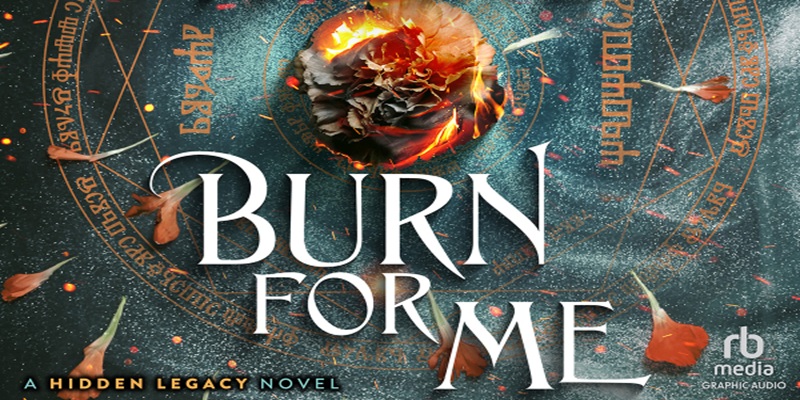
GA expect a similar release schedule for Hidden Legacy as for Kate, with a new installment every couple of months or so. They will be adapting all seven books in the series: Nevada’s trilogy, the Diamond Fire transition novella, and Catalina’s trilogy. They will also include the bonus unpublished Arabella POV blog exclusives: A Misunderstanding and The Cool Aunt.
Without further ado, the first samples from Burn for Me, fresh of the sound design table.
Mad Rogan abandons his hermit orchid and joins the Baylors for a meal:
Neva and Rogan meet Bug – the voice transformation is aweeeesome!
It’s an all-new director and cast, which I know you want to check out – GA have updated the list on the Burn for Me page I linked above.
The new team have had the same level of collaboration and insight from Ilona and Gordon as Nora and her team for the Kate adaptations. Pronunciations clips with HA’s preferences, advice on voice casting, insight on characters, what our favorite scenes are etc. But a reminder here as always that Graphic Audio are their on business, who approach the authors and buy adaptation rights to these works, so all creative and commercial decisions are ultimately theirs.
House Andrews do not commission them for these audio books. The GA dramatized full-cast adaptations will never replace the traditional, one-narrator audio books released by the authors and their publishers.
I have covered in more detail how to buy and the accessibility of the GA app in this post, which you can also supplement with the Graphic Audio Help FAQ on their website.
Audiobooks.com are also running a promotion for 70% the dramatized GA adaptation of Magic Slays until the 1st of May. A chance to complete your collection if you don’t own it already!
Happy listening!
The post Exclusive Samples of Burn for Me from Graphic Audio first appeared on ILONA ANDREWS.
Publishing updates for April 2025…
Women in SF&F Month: A. G. Slatter
This week of Women in SF&F Month starts with an essay by A. G. Slatter! Her work includes The Bitterwood Bible and Other Recountings (winner of the World Fantasy Award for Best Collection), Of Sorrow and Such (winner of the Ditmar Award for Best Novella), and The Path of Thorns (winner of the Aurealis and Australian Shadows Awards for Best Fantasy Novel). Her most recent novel, the gothic fantasy The Crimson Road, is described as “a tale of vampires, assassins, ancient […]
The post Women in SF&F Month: A. G. Slatter first appeared on Fantasy Cafe.Spotlight on “The Art Spy” by Michelle Young
The Art Spy, a riveting and stylish saga, uncovers how an unlikely heroine infiltrated the…
The post Spotlight on “The Art Spy” by Michelle Young appeared first on LitStack.
Monday Meows Xmas at Tax Time Edition
We…wish…you…a…stop. We wish you would stop.
No, this is cool. Really.
OMG! Is Santa really Captain America?
No. Just. No.
I wish you a merry…
Ha! Die stupid hat! Die!
I have you now, and your ruby slippers too!
The precious is mine!
I hate each and every one of you.
And, no I am not participating willingly. Please call my assassin. I have a job…
Windy City Pulp & Paper 2025 – ‘If Bob Were Here…’
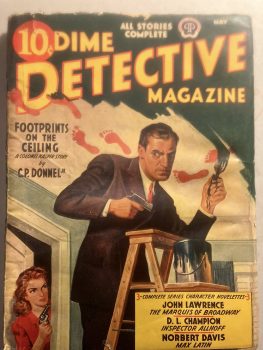
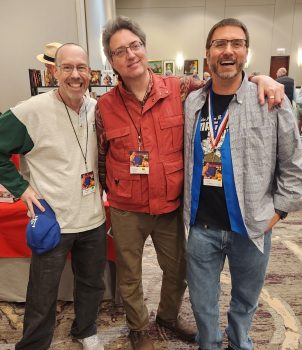 It’s an early A (Black) Gat in the Hand, as I got my Pulp on week before last, at Windy City, in Chicago.
It’s an early A (Black) Gat in the Hand, as I got my Pulp on week before last, at Windy City, in Chicago.
I managed to resist the impulse to grab the microphone in the Dealers Room and proclaim, “Finally….The Bob…has come back…to Windy City.” A little classic Rock for you there. And in not doing so, I wasn’t evicted and had a great time.
Doug Ellis puts on the Windy City Pulp and Paper Convention annually at the Lombard Westin, in the suburb an hour west of Chicago. I last attended in 2019. Of course, COVID hit in 2020, along with some other life changes. I made it to my first Howard Days in 2022, and headed over to Pittsburgh the last two years for Pulp Fest. Windy City just didn’t quite happen. But I made sure it did in 2025.
There’s an auction, some panels, an art show, and a massive Dealer Room. I’ll share my purchases here in a minute. But hands down, the best part of Windy City for me, is hanging and chatting with people. I see lots of online friends and some folks I’ve met before. I even make new friends. Sort of.
Walking around the Dealer Room and getting into conversations on pulp or paperback favorites is a blast. I find somebody to chat Nero Wolfe, or Jo Gar, or Solar Pons, or Solomon Kane, or Bail Bond Dodd, or…you get the idea. I found myself showing my Civil War shelfie to someone, as they talked about Shelby Foote.
There are always folks sitting around the lobby. I’ve met new friends just sitting down and working into the conversation. Saturday night, Ryan Harvey, Chris Hocking, James Enge, and I, spent over two hours just riffing through movies and writers. Ryan’s knowledge of multiple movie genres is staggering. And what those three knew about movie soundtracks left me soaking it in.
Add in eating a couple meals with friends, and the social aspect of Windy City is hands down my favorite part. As you’ll see, I find things to buy – and I restrain myself every year – but it’s talking about mutual interests at Windy City that is the highlight for me. Glad I made it back. See you there in 2026? Between the ever-present LA Dodgers cab, and a shirt with ‘Byrne’s Pub’ writ large on the back, I’m easy to spot.
What Did I Buy?
Max Latin!You may (or may not) know, I wrote the introduction to Steeger Books’ reissue of the collected Max Latin short stories. Norbert Davis is on my Hardboiled Mt. Rushmore, and the shady private eye Latin, is my favorite work of his. The fact that my intro replaced the last professional piece written by my favorite writer, John D. MacDonald, is awesome. You can read my intro, here at Black Gate.
For $70, I got the May 1942 issue of Dime Detective, containing “Give the Devil His Due.” This was the fifth Latin story, and I am now the proud owner of an original Latin story. There’s also a Marquis of Broadway by John Lawrence in this issue.
Gotta Have Some Howard!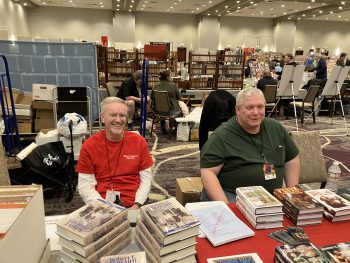 Will Oliver on the left. I think Security was trying to find the guy on the right, most of the show. Wait, that’s John Bullard. I stand by what I said…
Will Oliver on the left. I think Security was trying to find the guy on the right, most of the show. Wait, that’s John Bullard. I stand by what I said…
I resisted the impulse to bring home a haul of Robert E. Howard-related books. It’s easy to find more cool stuff to add to my library – even if I already have the stories included. But Robert E. Howard Foundation folks. Bill Cavalier, Paul Herman, and John Bullard were there. And breakfast with John and Paul was a conversational potpourri I won’t soon forget!
Held every June in REH’s hometown of Cross Plain, TX, Howard Days is a terrific gathering of Howard fans from all over the world. I wish I’d been into Howard back when I lived in Austin. Highly recommended weekend.
I met Will Oliver, a really cool guy (when you’re as cool as I am, you are drawn to other cool people. Yeah…) when I was down there. Will just put out an extensively referenced, door-stopper of a biography of Howard. I grabbed a copy directly from Will at the table, which he kindly signed. I am looking forward to digging into this and probably talking about it during this summer’s run of A (Black) Gat in the Hand.
Cool & LamI’ve written about my favorite Erle Stanley Gardner series many times here at Black Gate. But it’s not Perry Mason. I like the do-it-all lawyer, but the mismatched duo of Bertha Cool and Donald Lam easily hold my ESG top spot. You can find all of my Cool and Lam posts here, including the ‘lost’ pilot, with an intro by Gardner himself.
I don’t have quite all the books, and many are falling apart. As in, I’ve had to toss a couple. Those old Dell paperbacks get extremely brittle. I was happy to pick up two replacement copies at just $5 each. If you haven’t read Cool and Lam, you’re missing out on some high quality PI fiction. At least check out my first post on them, which is based on essay I wrote for Black Mask magazine (yeah, I appeared in THE Black Mask!).
The Frederick Nebel Library Grows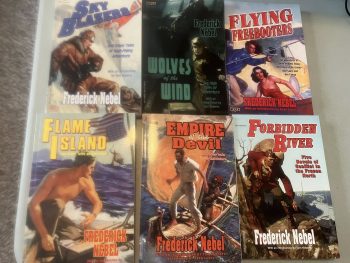 So, Norbert Davis’s is the third face on my Hardboiled Mt. Rushmore. Frederick Nebel is number two. Nebel was the guy that Joe ‘Cap’ Shaw tapped to slide into Dashiell Hammett’s place when the latter left Black Mask (and the Pulps). My library has a lot of Nebel from Steeger Books, including Cardigan, MacBride and Kennedy, and the under-appreciated Gales & McGill.
So, Norbert Davis’s is the third face on my Hardboiled Mt. Rushmore. Frederick Nebel is number two. Nebel was the guy that Joe ‘Cap’ Shaw tapped to slide into Dashiell Hammett’s place when the latter left Black Mask (and the Pulps). My library has a lot of Nebel from Steeger Books, including Cardigan, MacBride and Kennedy, and the under-appreciated Gales & McGill.
I already had a couple of Nebel’s air adventures from Illinois’ Black Dog Books. But when I saw Tom Roberts with a table at Windy City, I couldn’t resist. I picked up Sky Blazers, plus the three books along the bottom. Also, three more non-Nebels. I have a couple other digital books from Black Dog. Tom is putting out terrific Pulp by a lot of authors who deserve to still be read. And he has some great intros (I’m still trying to con him… I mean, convince him, to let me write one). I’m a fan of Black Dog, and you should check them out.
Sky Blazers/Wolves of the Wind/Flying Freebooters
I’m not into the Air Pulp genre – in fact, I can’t really even discuss it knowledgeably (like THAT ever stops me, as you well know). But I really enjoy Nebel’s Gales & McGill series, just about all of which appeared in Air Stories, I believe.
I now own all six Nebel books from Black Dog. The top three are all air stories, a few with recurring characters. Nebel and Horace McCoy are the only Air Pulps writers I read, and I’m looking forward to more Nebel.
Flame Island and Empire of the Devil are short story collections of exotic tales from the Adventure Pulps. This is another genre I haven’t read much, but with over 600 pages of Nebel, I’ll be working my way through these. Two of the stories were made into films.
Forbidden River – Nebel started out writing Canadian adventures – you know, Mounties and trappers. Forbidden River contains five such stories. Steeger has also put out two collections of these. Nebel was writing Northern adventures when he joined Black Mask.
Roger TorreyI have the excellent short story collection, Bodyguard, in digital. I couldn’t pass up a second Torrey book: this time in print. Torrey wrote in a straight hardboiled style, and he didn’t change at all as the genre moved more towards the Cornell Woolrich or John D. MacDonald style of mysteries. He was also a major alcoholic and became unreliable and of quite variable quality. He died young, still writing for the ‘lesser’ pulps. But when he was good, he was very good, and I’m a Torrey fan.
Norvell Page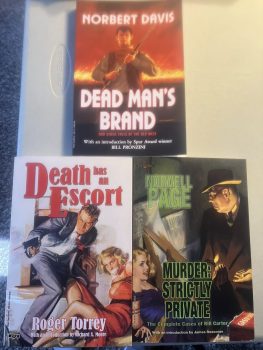 Page is best known as the primary writer of the hero Pulp, The Spider (under the house name, Grant Stockbridge). Like most Pulpsters, he wrote many genres, including weird menace, and G-men stories. I have his limited Western output as a Black Dog e-book.
Page is best known as the primary writer of the hero Pulp, The Spider (under the house name, Grant Stockbridge). Like most Pulpsters, he wrote many genres, including weird menace, and G-men stories. I have his limited Western output as a Black Dog e-book.
I really struggle with the Spicy Pulps. Briefly a popular genre, they’re just so goofy I can’t take them seriously enough to enjoy them. I wrote a post on a Robert E. Howard spicy story – and it was more of a saucy-tinged adventure. Whereas, I can’t even finish a Dan Turner (Hollywood Detective) story
in one -sitting.
Robert Leslie Bellem’s Turner is the most popular of the spicy detectives, even getting his own magazine. But to me, it’s like a parody of Race Williams. And Williams can be hard enough to absorb, without making it a spicy parody.
Page wrote a series of spicy stories featuring Bill Carter (who is not his Weird Menace star, Ken Carter), an investigative reporter in Miami. This volume collects (all?) twenty of them. Page is still kinda over-the-top for me, but these are FAR more readable than the Dan Turner stories. I’ll work my way through this book.
Norbert Davis’ WesternsI already had this in digital, but I couldn’t pass up the print edition. Davis didn’t write many Westerns, but he wrote some damn good ones. I already did this Black Gate post on one of my favorites, “A Gunsmoke Case for Major Cain.” I plan on covering a couple more for the summer Pulp series along the way. I really like his Westerns.
MISCI also picked up a Dell Mapback of Rex Stout’s Tecumseh Fox mystery, Double for Death. I like Mapbacks, and try to pick up one or two when they aren’t too expensive. I got a few Stouts last year at Pulp Fest.
Also, you should definitely attend Windy City next year if you want to play ‘If Bob Were Here.’ To hear something I said repeated back conversationally with “If Bob were here, I bet he would say…” I’m used to being ragged on. To combine it with being ignored is really impressive!
The Art Room
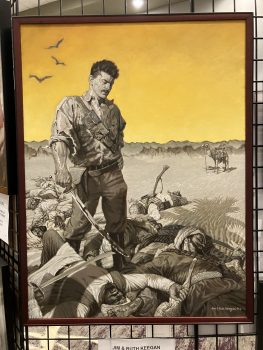
 I snapped a few pics of the really cool stuff in the Art Show, but I wish I had been dialed in for it. I would have gotten a lot. The Mark Wheatley, and Gary Gianni stuff, had most of my attention. But there was some neat REH and Edger Rice Burroughs stuff too.
I snapped a few pics of the really cool stuff in the Art Show, but I wish I had been dialed in for it. I would have gotten a lot. The Mark Wheatley, and Gary Gianni stuff, had most of my attention. But there was some neat REH and Edger Rice Burroughs stuff too.
I like this El Borak print by Jim and Ruth Keegan, from the Wandering Star/Del Rey books. There was a cool Solomon Kane pic by Gianni. There was a statue in front of it which it mirrors. I wish I’d taken a close up of it. I will be more focused when I visit the Art Room next time.
Gary Gianni was selling five prints for $30 – signed, at a table. I snagged them! There were four Solomon Kanes – color, and black and white. Also, one larger sized Conan from “A Witch Shall Be Born.”
He chatted with folks and is a super nice guy. I’m friends with Bill Cavalier (well, I don’t think he refutes that statement, anyways) and have met Mark Wheatley and Mark Schulz at Pulp Fest. Robert E. Howard artists have been really nice folks.
THE HOWARD ANDREW JONES PANEL
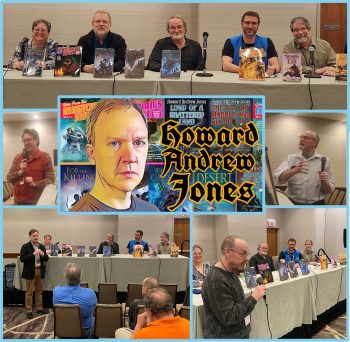 A lot of Howard’s friends and fans were at Windy City. There was a panel to remember and celebrate Howard, curated by his biggest fan and supporter, Arin Komins. John O’Neill, James Enge, Seth Lindberg, and John Hocking shared thoughts and memories. Audience members were also offered the opportunity to speak, and Howard’s fellow Black Gaters Ryan Harvey, Greg Mele, and myself, spoke fondly of our missed friend.
A lot of Howard’s friends and fans were at Windy City. There was a panel to remember and celebrate Howard, curated by his biggest fan and supporter, Arin Komins. John O’Neill, James Enge, Seth Lindberg, and John Hocking shared thoughts and memories. Audience members were also offered the opportunity to speak, and Howard’s fellow Black Gaters Ryan Harvey, Greg Mele, and myself, spoke fondly of our missed friend.
Kudos to Doug Ellis for setting aside time for Howard to be front and center. Mentions of him were peppered throughout the weekend among the Black Gate and associated crowd. We will be fondly remembering him for a long time to come.
One audience member came up and talked about helping when Howard was putting together the Harold Lamb collections. And he revealed there were some Lamb stories (four, maybe?) that they didn’t have the rights to, and I think Howard had edited those as well. Would be need to see those added to Howard’s Lamb work.
Jason Waltz – you can believe I took Arin and company to task as they were setting up the books, and there was no Hither Came Conan!
Prior Posts in A (Black) Gat in the Hand
2025 (1)
2024 Series (11)
Will Murray on Dashiell Hammett’s Elusive Glass Key
Ya Gotta Ask – Reprise
Rex Stout’s “The Mother of Invention”
Dime Detective, August, 1941
John D. MacDonald’s “Ring Around the Readhead”
Harboiled Manila – Raoul Whitfield’s Jo Gar
7 Upcoming A (Black) Gat in the Hand Attractions
Paul Cain’s Fast One (my intro)
Dashiell Hammett – The Girl with the Silver Eyes (my intro)
Richard Demming’s Manville Moon
More Thrilling Adventures from REH
Prior Posts in A (Black) Gat in the Hand – 2023 Series (15)
Back Down those Mean Streets in 2023
Will Murray on Hammett Didn’t Write “The Diamond Wager”
Dashiell Hammett – ZigZags of Treachery (my intro)
Ten Pulp Things I Think I Think
Evan Lewis on Cleve Adams
T,T, Flynn’s Mike & Trixie (The ‘Lost Intro’)
John Bullard on REH’s Rough and Ready Clowns of the West – Part I (Breckenridge Elkins)
John Bullard on REH’s Rough and Ready Clowns of the West – Part II
William Patrick Murray on Supernatural Westerns, and Crossing Genres
Erle Stanley Gardner’s ‘Getting Away With Murder (And ‘A Black (Gat)’ turns 100!)
James Reasoner on Robert E. Howard’s Trail Towns of the old West
Frank Schildiner on Solomon Kane
Paul Bishop on The Fists of Robert E. Howard
John Lawrence’s Cass Blue
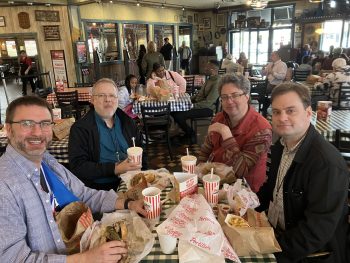 Dave Hardy on REH’s El Borak
Dave Hardy on REH’s El Borak
Prior posts in A (Black) Gat in the Hand – 2022 Series (16)
Asimov – Sci Fi Meets the Police Procedural
The Adventures of Christopher London
Weird Menace from Robert E. Howard
Spicy Adventures from Robert E. Howard
Thrilling Adventures from Robert E. Howard
Norbert Davis’ “The Gin Monkey”
Tracer Bullet
Shovel’s Painful Predicament
Back Porch Pulp #1
Wally Conger on ‘The Hollywood Troubleshooter Saga’
Arsenic and Old Lace
David Dodge
Glen Cook’s Garrett, PI
John Leslie’s Key West Private Eye
Back Porch Pulp #2
Norbert Davis’ Max Latin
Prior posts in A (Black) Gat in the Hand – 2021 Series (7 )
The Forgotten Black Masker – Norbert Davis
Appaloosa
A (Black) Gat in the Hand is Back!
Black Mask – March, 1932
Three Gun Terry Mack & Carroll John Daly
Bounty Hunters & Bail Bondsmen
Norbert Davis in Black Mask – Volume 1
Prior posts in A (Black) Gat in the Hand – 2020 Series (21)
Hardboiled May on TCM
Some Hardboiled streaming options
Johnny O’Clock (Dick Powell)
Hardboiled June on TCM
Bullets or Ballots (Humphrey Bogart)
Phililp Marlowe – Private Eye (Powers Boothe)
Cool and Lam
All Through the Night (Bogart)
Dick Powell as Yours Truly, Johnny Dollar
Hardboiled July on TCM
YTJD – The Emily Braddock Matter (John Lund)
Richard Diamond – The Betty Moran Case (Dick Powell)
Bold Venture (Bogart & Bacall)
Hardboiled August on TCM
Norbert Davis – ‘Have one on the House’
with Steven H Silver: C.M. Kornbluth’s Pulp
Norbert Davis – ‘Don’t You Cry for Me’
Talking About Philip Marlowe
Steven H Silver Asks you to Name This Movie
Cajun Hardboiled – Dave Robicheaux
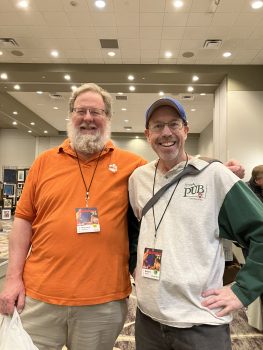 More Cool & Lam from Hard Case Crime
More Cool & Lam from Hard Case Crime
A (Black) Gat in the Hand – 2019 Series (15)
Back Deck Pulp Returns
A (Black) Gat in the Hand Returns
Will Murray on Doc Savage
Hugh B. Cave’s Peter Kane
Paul Bishop on Lance Spearman
A Man Called Spade
Hard Boiled Holmes
Duane Spurlock on T.T. Flynn
Andrew Salmon on Montreal Noir
Frank Schildiner on The Bad Guys of Pulp
Steve Scott on John D. MacDonald’s ‘Park Falkner’
William Patrick Murray on The Spider
John D. MacDonald & Mickey Spillane
Norbert Davis goes West(ern)
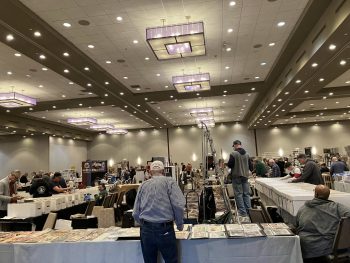 Bill Crider on The Brass Cupcake
Bill Crider on The Brass Cupcake
A (Black) Gat in the Hand – 2018 Series (32)
George Harmon Coxe
Raoul Whitfield
Some Hard Boiled Anthologies
Frederick Nebel’s Donahue
Thomas Walsh
Black Mask – January, 1935
Norbert Davis’ Ben Shaley
D.L. Champion’s Rex Sackler
Dime Detective – August, 1939
Back Deck Pulp #1
W.T. Ballard’s Bill Lennox
Erle Stanley Gardner’s The Phantom Crook (Ed Jenkins)
Day Keene
Black Mask – October, 1933
Back Deck Pulp #2
Black Mask – Spring, 2017
Erle Stanley Gardner’s ‘The Shrieking Skeleton’
Frank Schildiner’s ‘Max Allen Collins & The Hard Boiled Hero’
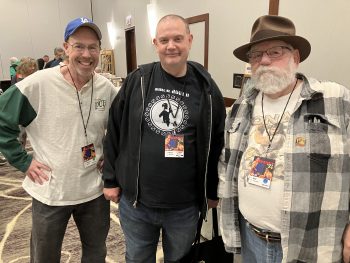 A (Black) Gat in the Hand: William Campbell Gault
A (Black) Gat in the Hand: William Campbell Gault
A (Black) Gat in the Hand: More Cool & Lam From Hard Case Crime
MORE Cool & Lam!!!!
Thomas Parker’s ‘They Shoot Horses, Don’t They?’
Joe Bonadonna’s ‘Hardboiled Film Noir’ (Part One)
Joe Bonadonna’s ‘Hardboiled Film Noir’ (Part Two)
William Patrick Maynard’s ‘The Yellow Peril’
Andrew P Salmon’s ‘Frederick C. Davis’
Rory Gallagher’s ‘Continental Op’
Back Deck Pulp #3
Back Deck Pulp #4
Back Deck Pulp #5
Joe ‘Cap’ Shaw on Writing
Back Deck Pulp #6
The Black Mask Dinner

Bob Byrne’s ‘A (Black) Gat in the Hand’ made its Black Gate debut in 2018 and has returned every summer since.
His ‘The Public Life of Sherlock Holmes’ column ran every Monday morning at Black Gate from March, 2014 through March, 2017. And he irregularly posts on Rex Stout’s gargantuan detective in ‘Nero Wolfe’s Brownstone.’ He is a member of the Praed Street Irregulars, founded www.SolarPons.com (the only website dedicated to the ‘Sherlock Holmes of Praed Street’).
He organized Black Gate’s award-nominated ‘Discovering Robert E. Howard’ series, as well as the award-winning ‘Hither Came Conan’ series. Which is now part of THE Definitive guide to Conan. He also organized 2023’s ‘Talking Tolkien.’
He has contributed stories to The MX Book of New Sherlock Holmes Stories — Parts III, IV, V, VI, XXI, and XXXIII.
He has written introductions for Steeger Books, and appeared in several magazines, including Black Mask, Sherlock Holmes Mystery Magazine, The Strand Magazine, and Sherlock Magazine.
You can definitely ‘experience the Bobness’ at Jason Waltz’s ’24? in 42′ podcast.
Review: A Drop of Corruption by Robert Jackson Bennett (Reviewed by Caitlin)

Buy A Drop of Corruption
Read a review of Book One, The Tainted Cup
Read Lukasz's review of A Drop of Corruption
OVERVIEW/ANALYSIS: Investigators Ana and Dinios are used to unusual crimes, so investigating the disappearance of a Treasury officer from a locked room is a relatively trivial matter. It's only a matter of hours before Ana not only works out how the person disappeared, but also deduces that they have been murdered as well. But as to who did it and why? That's a much trickier mystery to solve. The culprit seems to possess an almost supernatural ability to circumvent security measures and to anticipate Ana's investigation. The only thing Ana knows for sure is that the murderer's ultimate target is the Shroud, a high-security factory where the Empire harvests the leviathan blood that drives so much of it. And if the Shroud falls, the Empire could fall with it.
A Drop of Corruption is another rousing success from Robert Jackson Bennett, at once both a twisty mystery and harsh critique of colonialism. Returning fans will settle right back in with Ana and Din's familiar cadence: Din does the leg-work, interviewing witnesses and assessing crime scenes, while Ana takes the information and works out how the pieces come together. I was glad to see how Din had grown into his role, understanding that Ana's sometimes odd requests always have a reason, and knowing what kinds of information Ana is looking for.
Even though Ana and Din are working on behalf of the Empire, this is not a book that takes the side of the Empire. Instead, it uses the mystery to examine the messy can of worms that comes from colonizing an already inhabited land. While many of those Din interviews are high level officials, there is attention paid to the common folk who get caught in the middle of the political games between the Empire and the native regional government. The story also acknowledges that there are no clean solutions to the problem, as the Empire pulling out of the colony comes with its own set of headaches and injustices.
This book never feels like a lecture, however, because the message is blended with the absolutely engrossing world-building. A Drop of Corruption continues to iterate on the weird alchemical enhancements introduced in the first book, introducing us to new weird ways people alter themselves in this world. And in the process of delving deeper into the science of alchemy...well let's say some past things that may have registered as off to some readers may start to make sense.
CONCLUSION: In short, A Drop of Corruption further solidifies Robert Jackson Bennett as an autobuy author for me. From his deep, intricate world-building to his real world commentary, every one of his books is a full meal. Even if you're just here for the mystery, you're going to have a great time. But for those who just want to lose themselves in a completely different world? You need to pick his books up.
New ebook cover art for Swan Song
Comment on A Beginner’s Guide to Drucraft #33: Sigl Recycling (III) by Varis
Thank you for this post, it was exactly the knowledge I was thinking Stephen was missing and should be thinking about. I mean, obviously he has seen people drain wells, and should be wondering about doing it himself and what one can do with the drained magic. Sounds like he desperately needs to educate himself on how to convert wells into pure arum (rather than sigils) so he can start building a supply. And then secondarily can practice with all the old failed sigils he already has. Considering the extreme competition for powerful wells and his extreme skill at finding lower ranking wells, it seems the most likely chance of him manufacturing higher level sigils would be by combining the magic from multiple small wells…
Neverwhens: War “On Earth, As it Is in Heaven” — Rebecca Roanhorse’s Mirrored Heavens
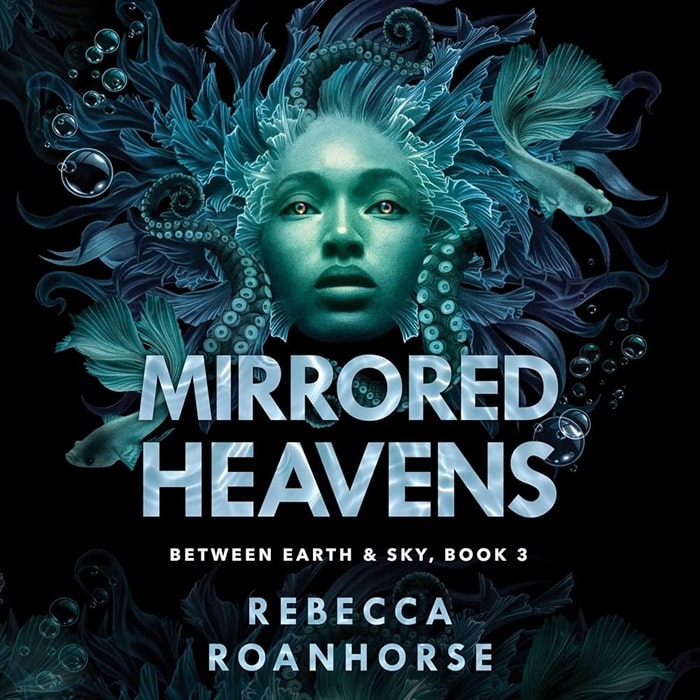 Mirrored Heavens by Rebecca Roanhorse (Saga Press, June 4, 2024)
Mirrored Heavens by Rebecca Roanhorse (Saga Press, June 4, 2024)
Between Earth & Sky has always been about doing something fresh.
Rebecca Roanhorse set out to create an epic fantasy set in a world based on the pre-contact Americas. It has its Maya, Cahokia, Ancestral Puebloan and Woodlands analog cultures; it has a seafaring matriarchy that is a bit Polynesian, a bit Caribbean, a bit “this would be cool.” But the world of The Meridian is its own thing. At times the technology is greater than what existed in our world, it has giant crows, eagles, insects and winged serpents tamed as mounts and its gods are very real, and not particularly benevolent.
But if the world the author sets her fantasy is drawing from cultures underused in fantasy, the story-structure is unique as well. This is not a story of a rising dark lord and the plucky heroes that rise against him. Its villains are all-too-human, motivate by sometimes petty desires, sometimes misplaced love, and if there is a “Dark Lord”, well he is one of the most sympathetic characters in the entire tale.
None of this is inversion for inversion’s sake; it is about telling a compelling, fresh story that feels authentic to the sources that inspired its author, and now it has all come to an end with Mirrored Heavens.
Sticking a landing is always tricky and Roanhorse to some extent set herself a challenging task at the end of Book 2. The mid-book of a trilogy is always a bridge story of revelations and few resolutions, but in Fevered Star we only truly see into the villain’s mind — or even realize his full roll — in the last third of the book. Our two main pairs of heroes: Serapio and Xiala, Narampa and Ixtan, spend the novel separated while the fifth main hero, Okoa, is mostly haplessly dragged from bad decision to bad decision. Things end with the predictable “it’s even worse now”, but other than an epic, beautifully rendered clash between Serapio and Narampa, as respective avatars of the Crow and Sun, in some ways the stage feels unset for resolution in one volume.
That would all be true if Roanhorse was trying to write The Lords of the Rings, pre-Contact Americas style. But she isn’t, and her story isn’t triggered by plot, but by characters. If there is a reveal in Fevered Star it is that all of our main characters, even the villainous Balam, have been motivated by personal relationships, disappointments or love. For all the interplay of ancient gods and prophecies, the story is indeed about Serapio and Xiala, Narampa and Ixtan, Okoa and yes, even evil Balam. It’s about family and isolation, a desire to belong and be loved, or what happens when that instead turns into possessive control. Consequently, to borrow a line from the otherwise wretched The Last Jedi: This isn’t going to go how you think it will.
Reading the above, one might think this is a very literary, slow book. It is not. From the first page there is assassination attempts, blood magic, scary monsters and marching armies. As with the first two volumes, Roanhorse’s prose is tight, sometimes even clipped, and her pages fly by. The summary of our situation: Serapio, now the Carrion King and ruler of Tova, is trying to cement his rule as the Crow clan’s living messiah, and knows that besides the other clans wishing to murder him, the rulership of his own clan has no love for being supplanted by living avatar.
All the other cities of the confederacy are marshalling against him, and he doesn’t even know that the villain behind it all is the man who sent him on his quest — and has been involved in his very creation from the start. He is presented with a prophecy, supposedly from the maw of the trickster god Coyote himself that says that if he slays his “unloved bride” and his father, he can win the three different wars brewing against him, but only by losing everything. What the hell does that mean, and how much further into dark, even cruel, paths will Serapio descend to fulfill it. Indeed — is he even the “good guy” and what is he trying to win?
Okoa, as brother to the Carrion Crow matron, has come to respect and idolize Serapio, but like everyone — fears him. His sister reveals the other clan matrons have learned of a weapon that can slay the Carrion King and demands Okoa’s help.
Narampa feels the power of the Sun growing in her and has fled to the north, to the Graveyard of the Gods — where it is said the gods made war and were “slain”/banished from the mortal world — seeking a shaman who can teach her how to use the mysterious godflesh mushrooms that will allow her to enter the various spirit worlds and fight to liberate her city from the Crow. Only she, too, does not realize Serapio is not the problem…
Ixtan is in the city of Hokaia, adrift and unsure what their path now is, until they learn that Narampa lives and that the southern lord Balam is at the heart of everything. A dangerous thing for a “Priest of Knives” to learn.
Xiala has returned home to the isles of the reclusive Teek. Her mother dead, she should be queen — a role she has run from. But Lord Balam’s agents have come to enslave the Teek, and somehow she has to save her people and find a way back to Serapio to warn him.
Seem like spoilers? That’s where we pick up and in a way that’s all you need to know. The rest of Mirrored Heavens is about how each of these players follows that path, and a revelation of how Lord Balam came to be bent on quest of the cities of the Meridian. The resolution will have blood magic, shadow worlds, a clash between gods, love and definite loss…and it won’t be what you think.
Now, confession: I came close to rating this to four stars because, with so much to resolve and tie up, it is only within the last 70 pages of a 600-page novel that it all starts to come into motion. The final clash is certainly dramatic, maybe almost too much — it feels very much like the final confrontation scene would expect in a Marvel movie, or at least an 80s adventure film. For all of the build-up, Serapio and Narampa are not fated to meet again and, indeed, many characters here fail to understand their role in the story, or make choices that lead to worse, not better, and never do recover from it.
A key to victory comes from an idea introduced about five pages before it is used, which felt contrived. Finally, the more we learn of Lord Balam’s backstory, the less competent he seems, and more like the real-world’s over-privileged billionaires who are interfering in the modern world simply because they can, they have the resources to bully their way in, and because they don’t like being told no. It all felt a bit rushed, and not always fair to the characters we’d been running with for 1600 pages.
Then I read the two final chapters, that serve as epilogues.
As I said at the start of this review, Rebecca Roanhorse isn’t trying to write a “Native American Lord of the Rings“, she is telling her own tale, and when you get to the end it all clicks. Besides tying every loose end, the other choices: a somewhat tragic, almost pointless, death of a main character; the fact that an assassin not only gets away with it, but parleys their actions into more power; the fact that some of the great heroism of a character is never known or understood — yes, that’s how the world works in politics and in war.
The gods are real, yet their ultimate appearance remains vague, unclear, and seemingly uncaring of mortal cost because they are gods — not mortals writ large. There is nothing of the Classical or Judeo-Christian belief to these deities; they are primal and simply are — once they act, mortals are left to reason for themselves what it all means. Scenes that occur off-stage do so because they really tell us nothing about the interplay of the core characters, and that’s what this story has always been about: a small group of players caught in the center of a revenge decades in the making.
Could the end have been a bit longer? Perhaps. Do I still think Lord Balam never really quite works as the chief villain? Somewhat. Is the “secret weapon” introduced just before it is needed… needed. No. But in the end, that doesn’t matter: Mirrored Heavens is ultimately about people and in telling that story, Roanhorse creates a magic and adventure-filled conclusion to one of the freshest epic fantasies I’ve read in years. I am already missing Serapio, Xiala, Ixtan and the rest, and although the story of The Meridian seems complete, Roanhorse mentions a distant western Empire of the Boundless Seas and other lands I’d eagerly visit.
(You can read my review of volume one here: Neverwhens, Where History and Fantasy Collide: Brilliance Gleams Beneath a Black Sun.)
Women in SF&F Month: Week 3 Schedule & Week in Review
The fourteenth annual Women in SF&F Month continues tomorrow, with four new guest posts and a cover reveal/book giveaway coming up this week. Thank you so much to last week’s guests for their wonderful essays! Before announcing the schedule, here are last week’s guest posts in case you missed any of them. All guest posts from April 2025 can be found here, and last week’s guest posts were: “Crayon Trails: On Friendship, Grief, and an Unlikely Book Deal” — Roanne […]
The post Women in SF&F Month: Week 3 Schedule & Week in Review first appeared on Fantasy Cafe.Tubi Dive, Part I
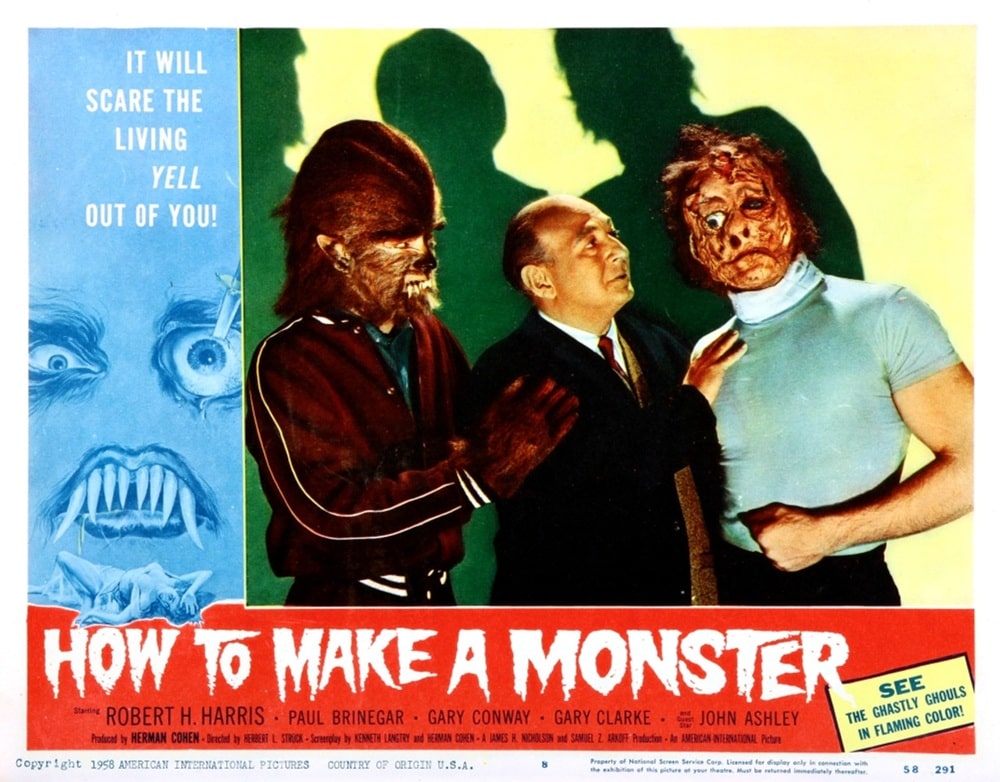 How to Make a Monster ( American International Pictures, July 1, 1958)
How to Make a Monster ( American International Pictures, July 1, 1958)
50 films that I dug up on Tubi.
Enjoy!
How to Make a Monster – 1958, AIPAs a slight deviation from our usual programming of themed lists, here are the results of a deep dive I recently undertook, pushing Tubi to the limits. So here we are with How to make a Monster, a follow-up of sorts to the two spectacular schlock movies, I Was a Teenage Frankenstein and I Was a Teenage Werewolf, both released a year earlier in 1957 from American International Pictures. Monster double-billed with Teenage Caveman (which I previously reviewed when I was on my cave people kick), and is probably my favorite of the film series.
It isn’t your usual narrative, but rather a meta-tale of the studio itself, and I LOVE movies about making movies. In this one, Pete Dumond, the ‘Jack Pierce’ of his day, is the makeup wizard who designed and applied the prosthetics for the two previous films. When he discovers that the studio has been taken over by a company that isn’t interested in monster films, and is subsequently fired, Pete goes on a murderous rampage, only he doesn’t do the killing himself. Instead he brainwashes the young actors playing the monsters via a strange foundation cream (bear with me here) and coerces them to killing the new studio stooges while in full makeup.
Eventually, the cops figure out what is going on, and it all ends up in a rather bonkers and fiery final act. One of the great gimmicks employed here is the final reel being in full colour (a similar stunt was pulled on Teenage Frankenstein), and it’s quite jarring, but in a good way. Fun stuff!
7/10
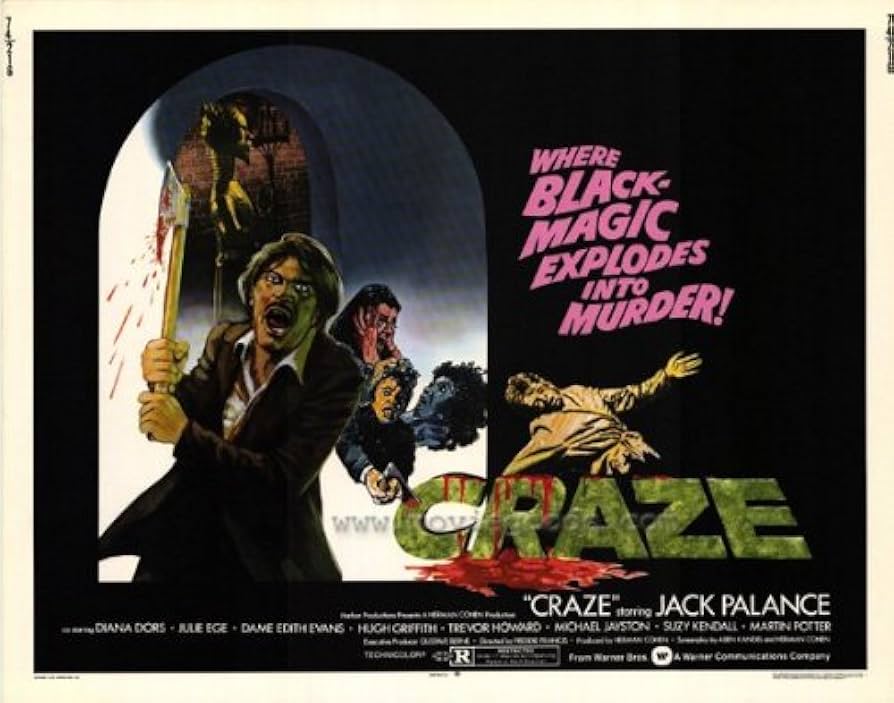 Craze (Warner Bros, June 5, 1974)
Craze (1974)
Craze (Warner Bros, June 5, 1974)
Craze (1974)
A strange little film from one of my favorite directors, Freddie Francis (who hated this one), Craze is based on the novel The Infernal Idol by Henry Seymour. It tells the story of an English antiques dealer who is wrapped up in black magic, and who worships a spooky African idol called Chuku. After a bloody alter, he begins to associate human sacrifices with financial gain (via Chuku), and promptly goes on a murderous spree to keep his idol happy.
Jack Palance is the most unconvincing Englishman ever put on film (until Keanu in Dracula), but he is ably supported by Julie Ege, Diana Dors and Trevor Howard. There are moments that echo the Amicus glory days, however it’s an uneven film, and the version I watched appeared to be edited for ghastliness.
Good if you’re planning a scary idol night.
5/10
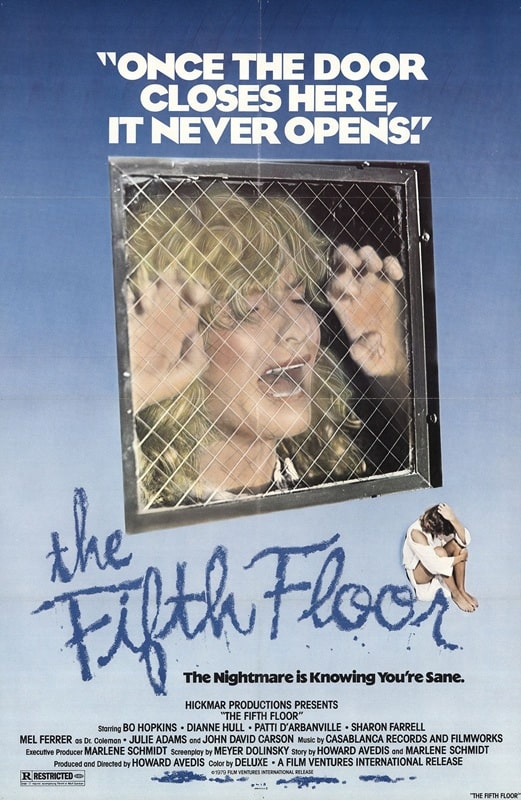

The Fifth Floor (Film Ventures International, November 15, 1978)
and The Boneyard (Zia Film Distribution, June 12, 1991)
Based on a true story, The Fifth Floor is about a young woman, Kelly (played by Diane Hull), who is accidentally poisoned at a disco and is taken to hospital. Her records indicate that she has tried to self harm before at age 15, so she is recommended for psychiatric assessment and care, leading to a three day stay at a facility. She soon runs afoul of a sleazy attendant, and her stay is increased to two-weeks, eventually being drawn out to 60 days. During this time she is abused, both mentally and sexually, and nobody believes her, especially her useless boyfriend.
It’s a pretty run of the mill movie, but the cast is the standout, and makes this an interesting watch. As with One Flew Over the Cuckoo’s Nest, the patients are portrayed by some familiar faces, notably Robert Englund (fresh off telling his roommate to try auditioning for a space movie…), Anthony James (the villain in every TV show and film you ever watched), Earl Boen (who would go on to become a psychiatrist himself in the Terminator films), and Michael Berryman (of course).
The uncaring boss of the facility is played by Mel Ferrer, and the sleazy, abusive orderly is played by none other than Bo Hopkins. Julie Adams plays one of the nurses, so of course this Black Lagoon lover was very happy about that.
Not fun, but I didn’t hate it, which is high praise considering the films I seek out.
5/10
The Boneyard (1991)Here’s an interesting one I hadn’t seen before, and when I say interesting, I mean a bit dull, then utterly barking mad.
Two years before The X-Files gave us Mulder and Scully, The Boneyard gave us Jersey Callum (Ed Nelson) and Alley Oates (Deborah Rose), a detective and psychic respectively, both at the end of their games and leaning against each other for support. A child murder case leads them both to a vast mortuary, run by Phyllis Diller (who totally over-Dillers every scene she’s in). Before you know it the child corpses turn out to be flesh-eating demons, and shenanigans ensue.
Yes, this one is painfully slow to get started, but once it does, it’s a lot of fun. The child demons are quite ghastly and really well made, and it’s a pity the same cannot be said for the two goofy monsters that crop up toward the end. James Cummings was a bit of a makeup legend before he tried his hand at directing, and it showed in the monsters — unfortunately the rest of his direction was really pedestrian.
There are some hilarious moments, some gooey moments, and a poodle moment that would make Ang Lee go off in his pants. Worth a look if you’re feeling brave.
6/10

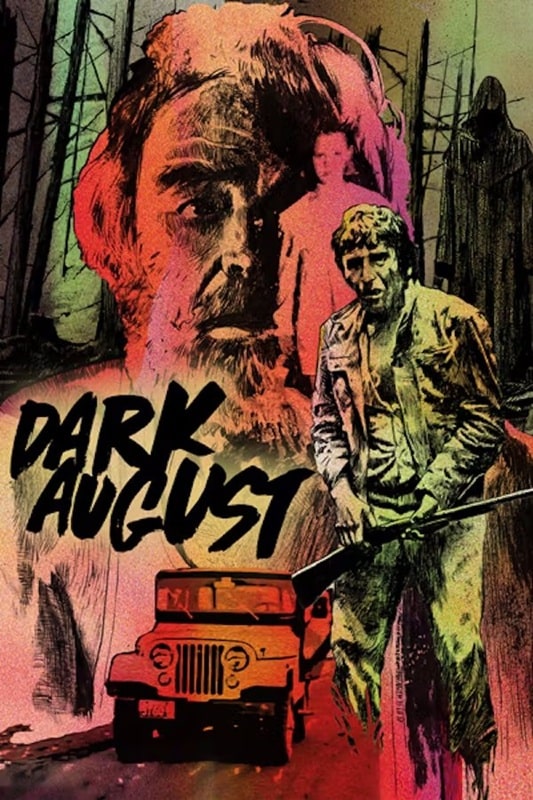
Schizoid (The Cannon Group, September 5, 1980)
and Dark August (Howard Mahler Films, September 10, 1976)
Next up is this non-politically correctly titled slasher from the start of the best decade. Someone is stalking and murdering the members of a therapy group run by the terminally horny Dr. Fales (Kinski).
A newspaper columnist (Marianna Hill) is being sent threatening letters, and the cops (led by Richard Herd) don’t take them seriously. Her creepy ex-husband (Craig Wasson) is more concerned with getting the wallpaper up in his office (!), and Kinski shags everyone.
It’s fine, I guess, except the mystery killer is given away at the beginning. Oh, and Christopher Lloyd is in it, being all weird and sinister, so a bonus point there.
1/10
Dark August (1976)Sal, an artist recently moved from NY to Vermont, doesn’t do a good job of fitting into his new rural life because he immediately runs over a young girl. It’s an accident, but the girl’s spooky grandfather doesn’t see it that way, and proceeds to voodoo Sal up the wazoo.
Creepy apparitions, bloody coughing and tummy aches ensue. It’s a bit slow, but there is a handful of inspired shots. Kim Hunter is in it as a committed medium, so that’s a bonus.
1/10
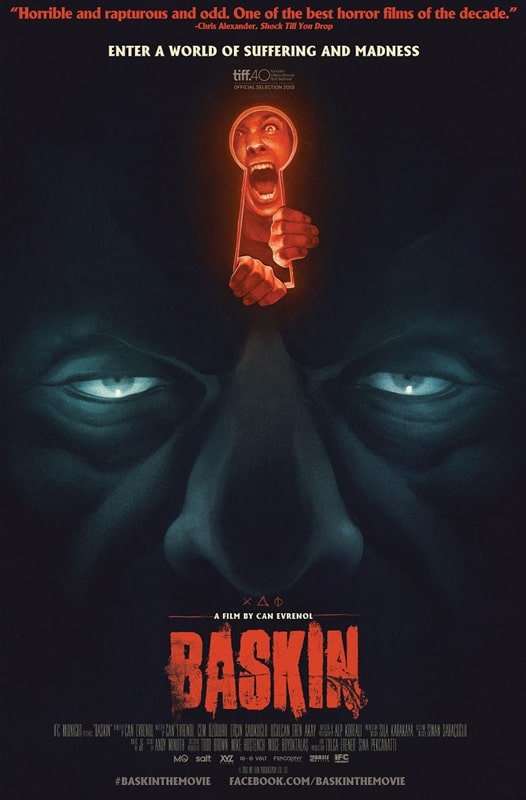 Baskin ()
Baskin (2015, Turkey)
Baskin ()
Baskin (2015, Turkey)
Just five months after the US Thanksgiving celebrations, here is a delicious slice of Turkey, all wrapped up in one hell of a mind-bending horror film.
Baskin is a simple tale about a squad of police officers just mooching about, not doing much, when they get a call to a ‘disturbance’ in a dodgy part of town.
They answer the call, but crash their van along the way and end up at a big old house. The minute they go inside they are confronted by assorted ghastliness, and another officer banging his own head against a wall, and then it all goes rapidly downhill.
They find themselves quite literally in Hell surrounded by writhing masses of flesh and blood, and soon they are in the clutches of a cannibalistic cult, led by an enigmatic and terrifying figure. The sense of dread is astounding, and the film itself is gorgeous, albeit utterly horrific. Its surreal sensibilities put me in mind of Mandy (2018), and its overall sense of doom reminded me of Descent or Dog Soldiers. It’s a bit of a hard watch, and certainly not fun, but it’s worth a watch if you fancy something darker (and stickier) than molasses.
8/10
Previous Murkey Movie surveys from Neil Baker include:
What Possessed You?
Fan of the Cave Bear
There, Wolves
What a Croc
Prehistrionics
Jumping the Shark
Alien Overlords
Biggus Footus
I Like Big Bugs and I Cannot Lie
The Weird, Weird West
Warrior Women Watch-a-thon
Neil Baker’s last article for us was Part III of What Possessed You? Neil spends his days watching dodgy movies, most of them terrible, in the hope that you might be inspired to watch them too. He is often asked why he doesn’t watch ‘proper’ films, and he honestly doesn’t have a good answer. He is an author, illustrator, teacher, and sculptor of turtle exhibits. (AprilMoonBooks.com).

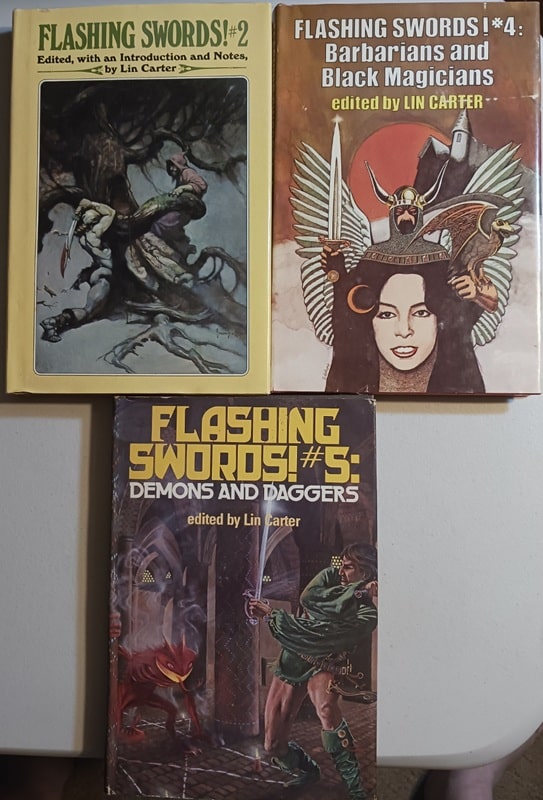
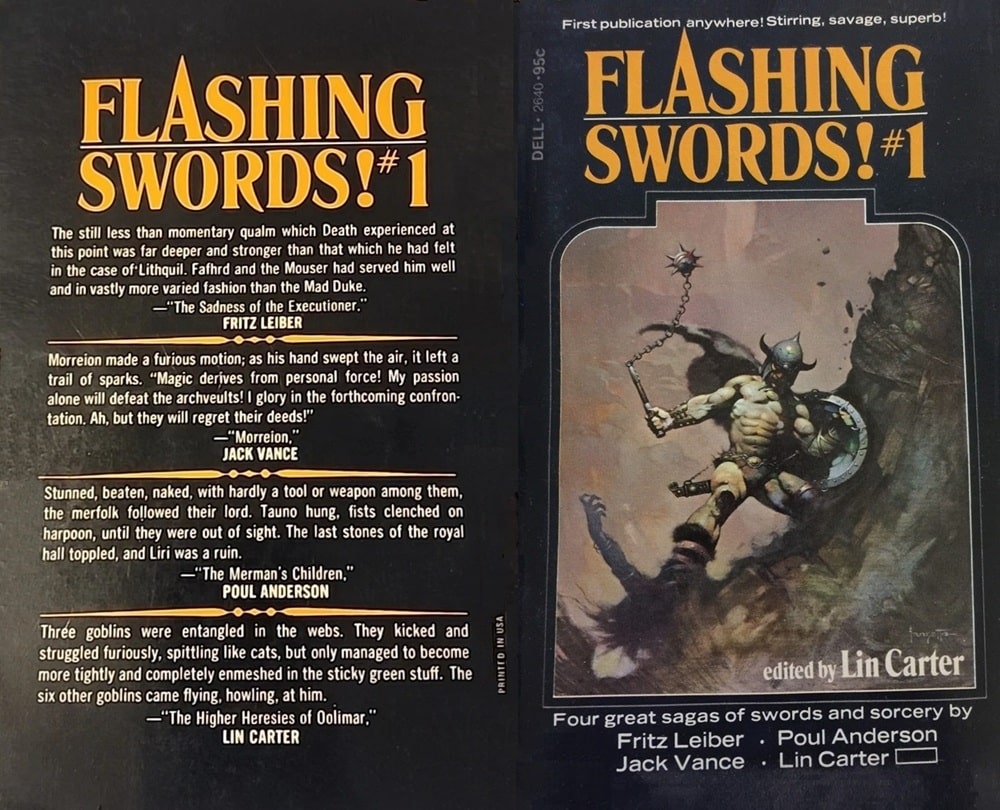
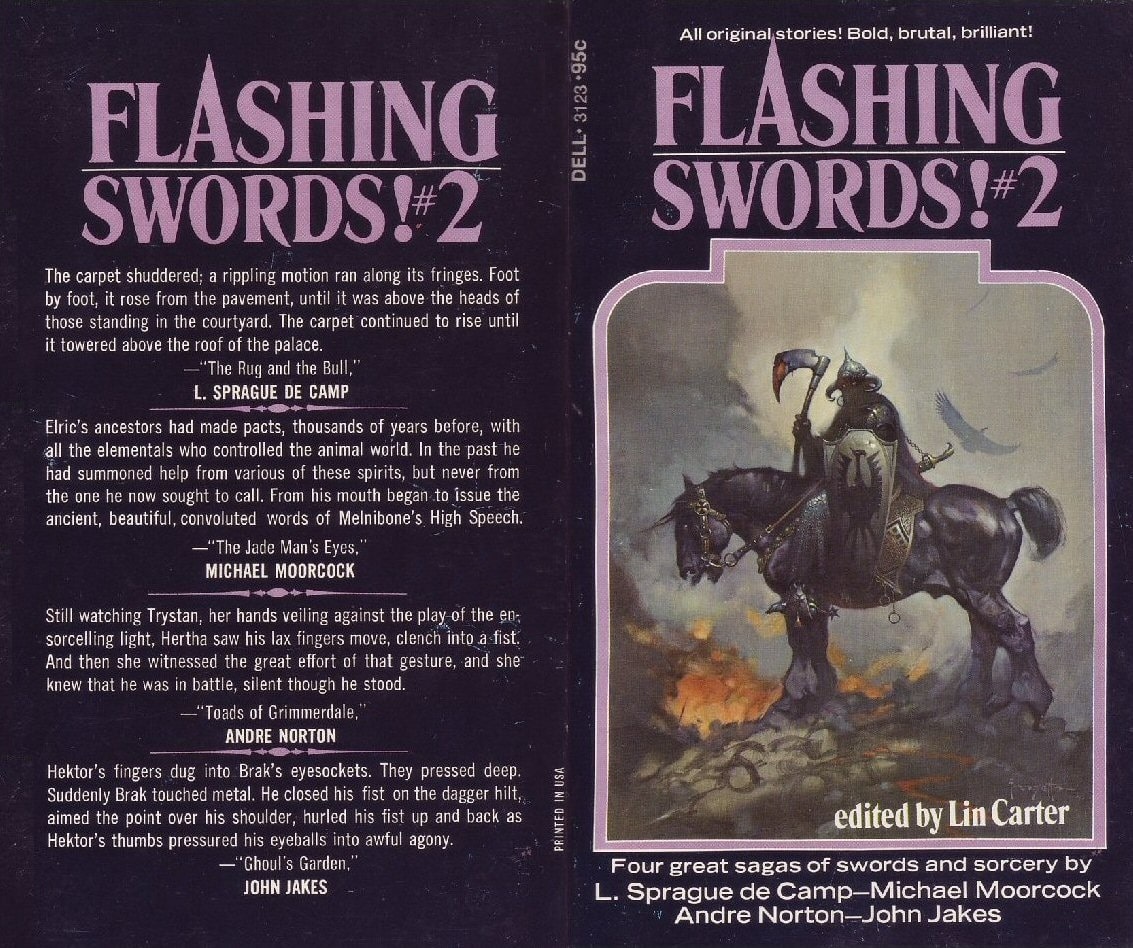
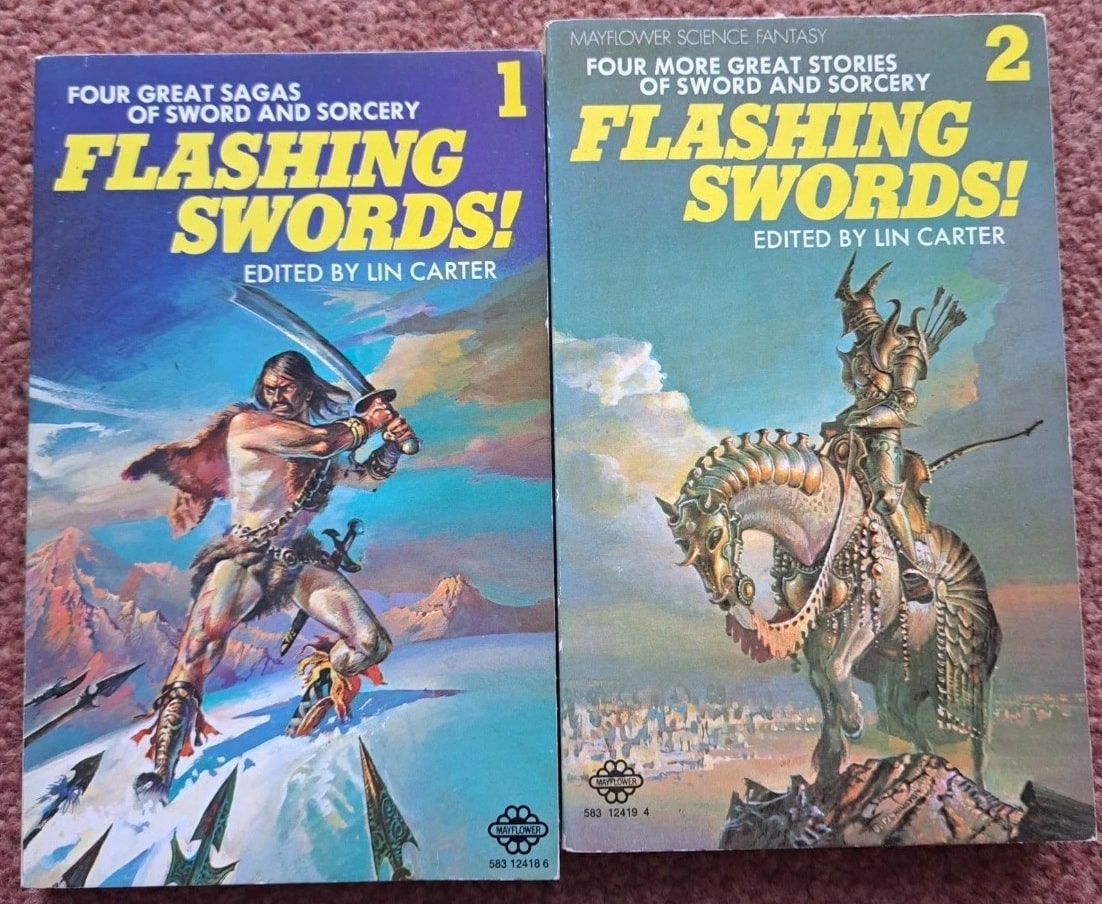

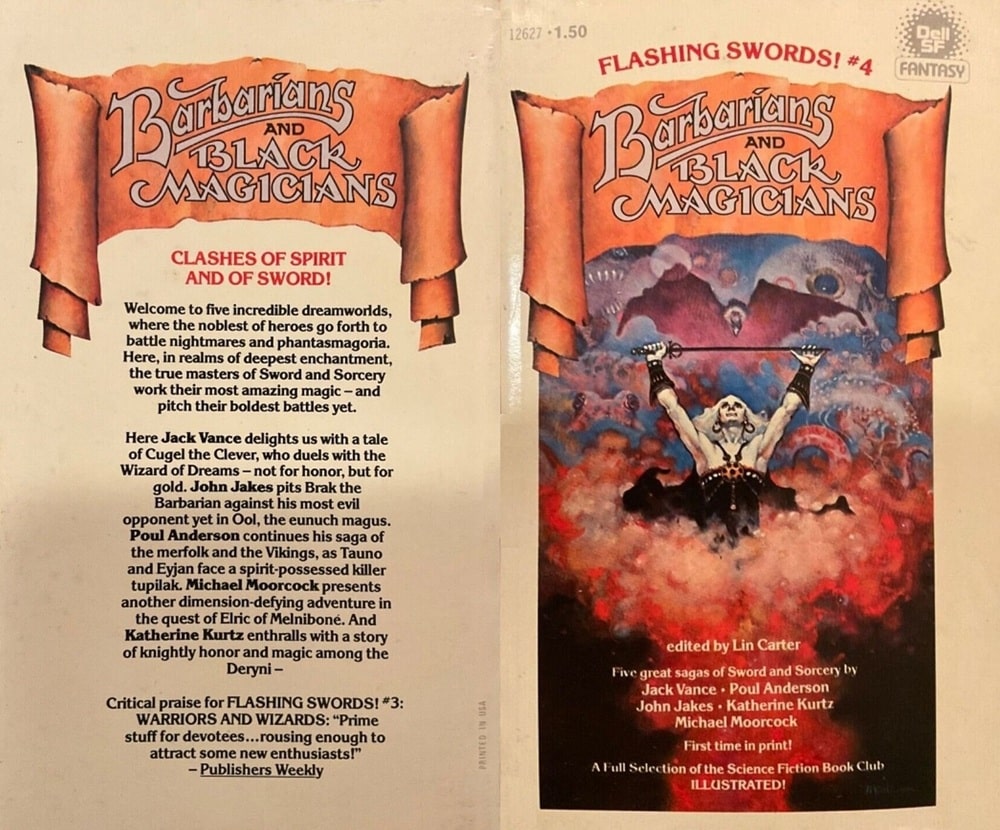
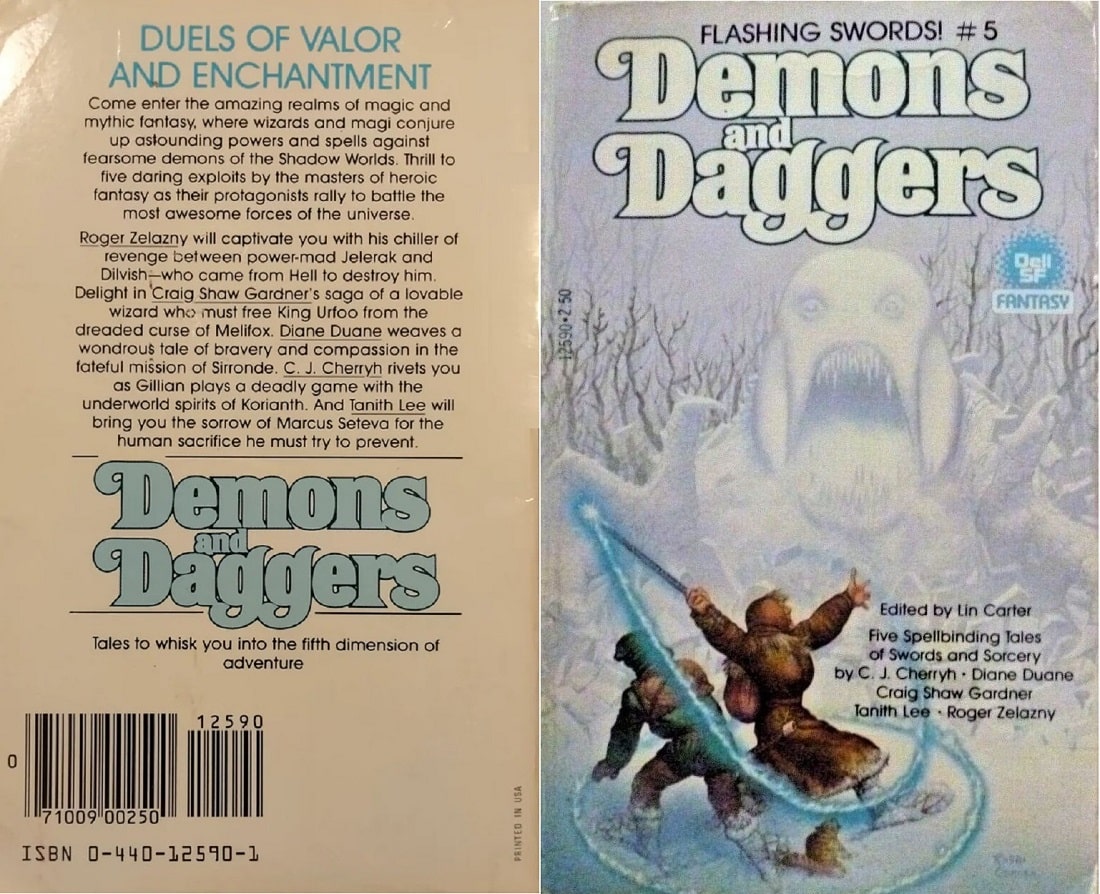


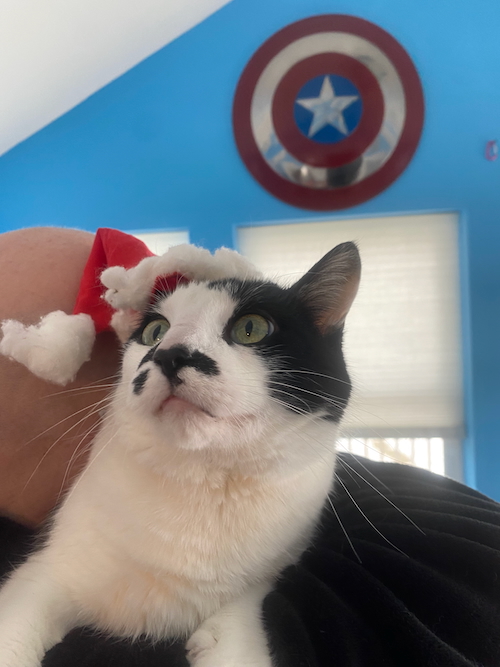

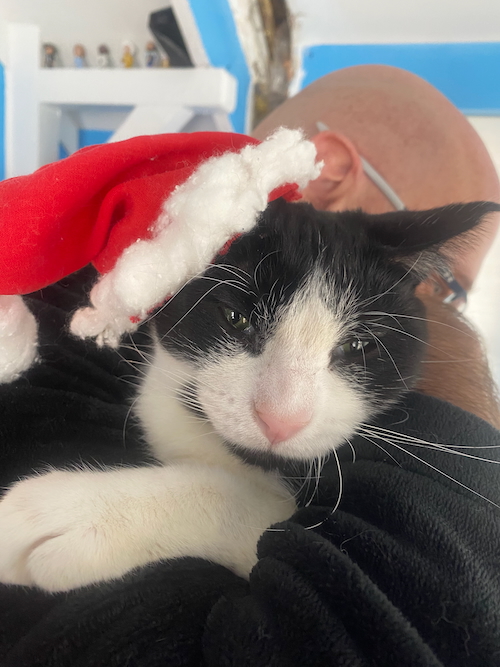
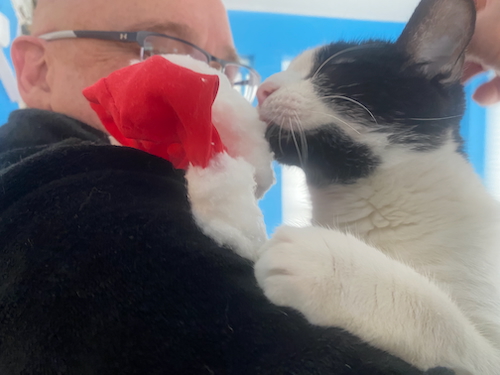
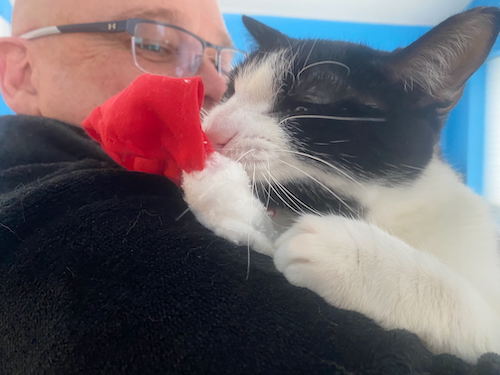
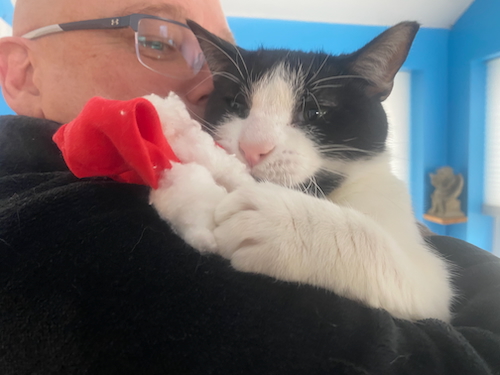


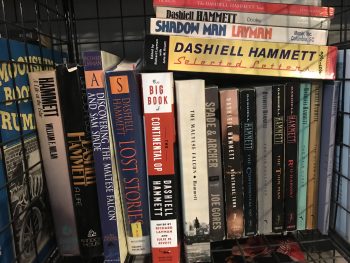

Recent comments